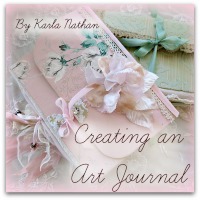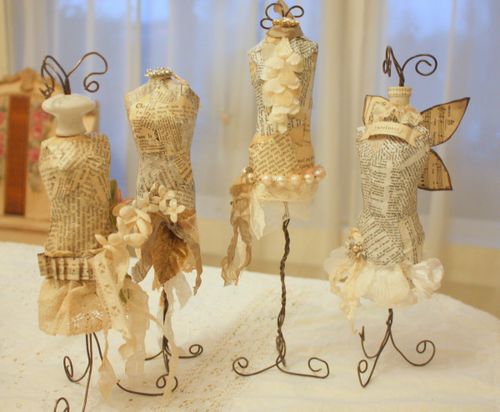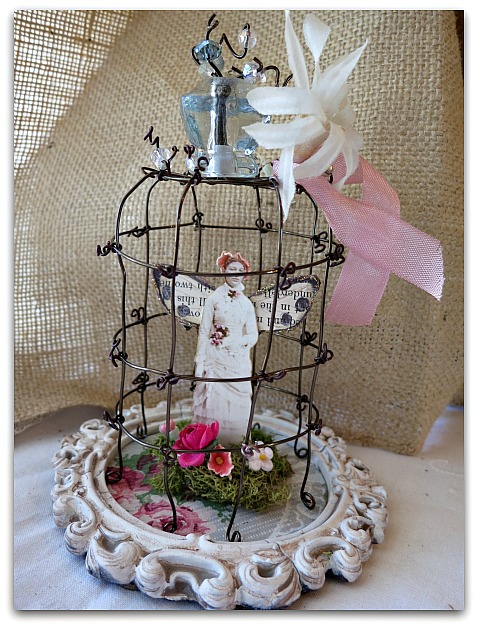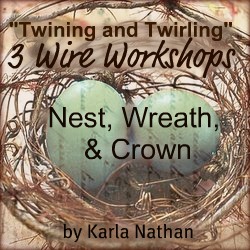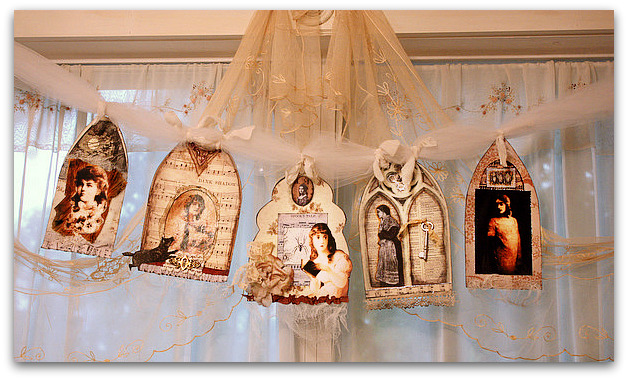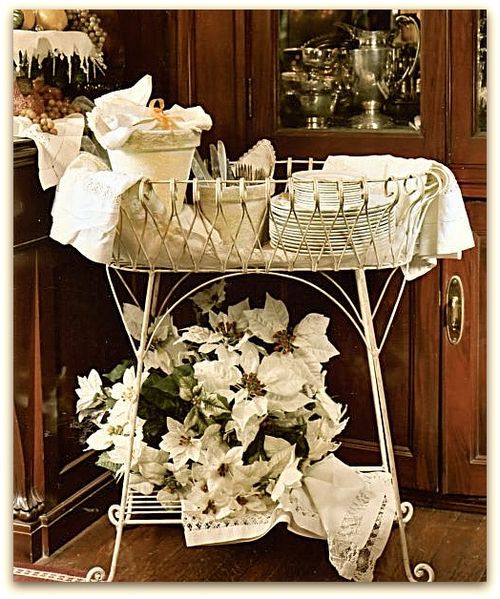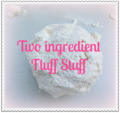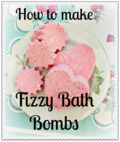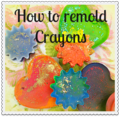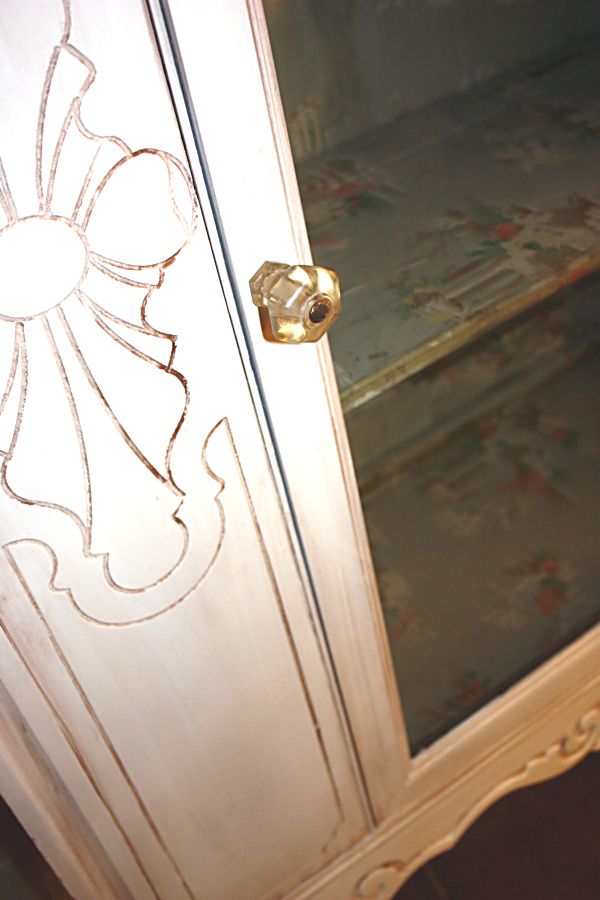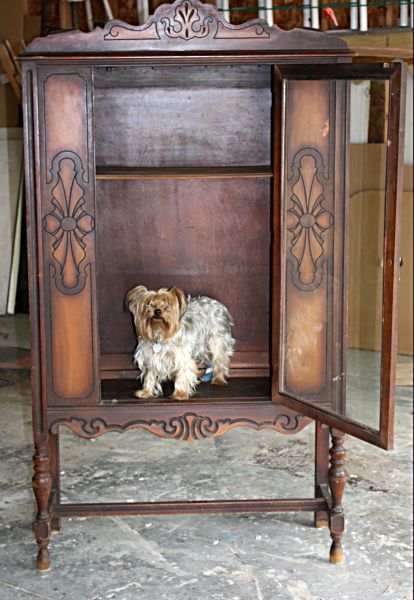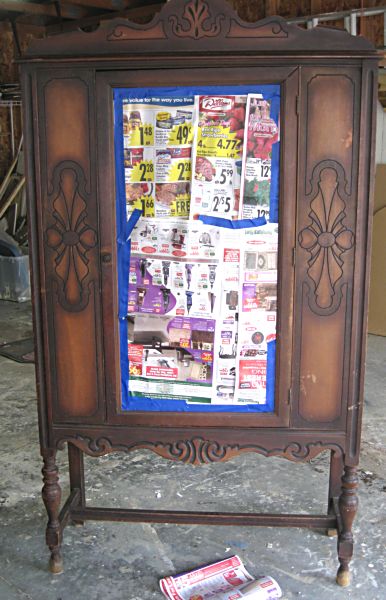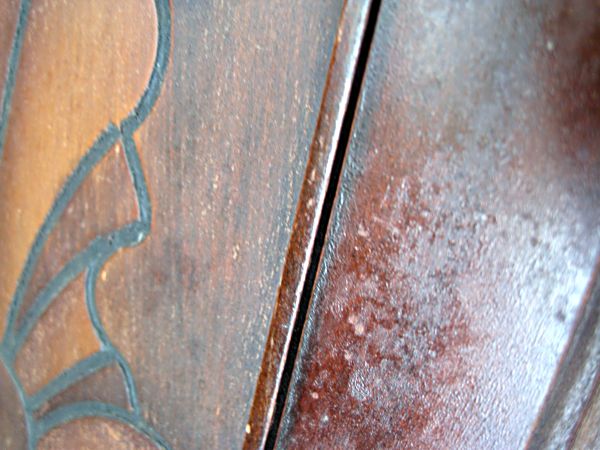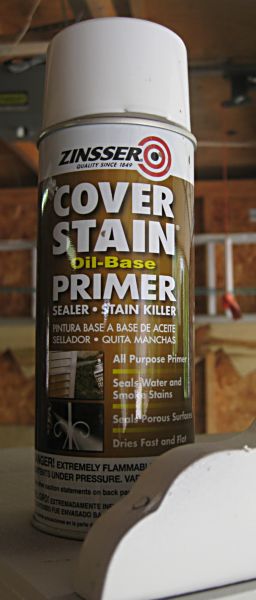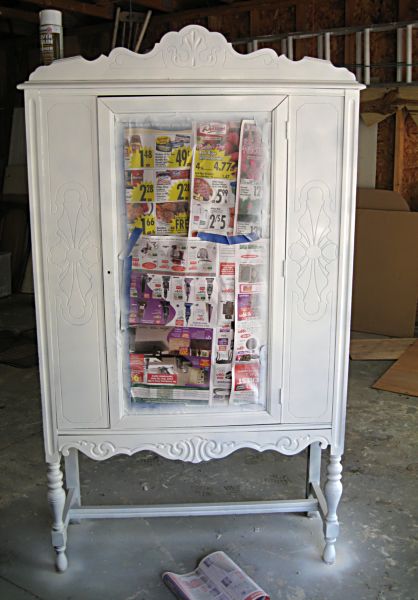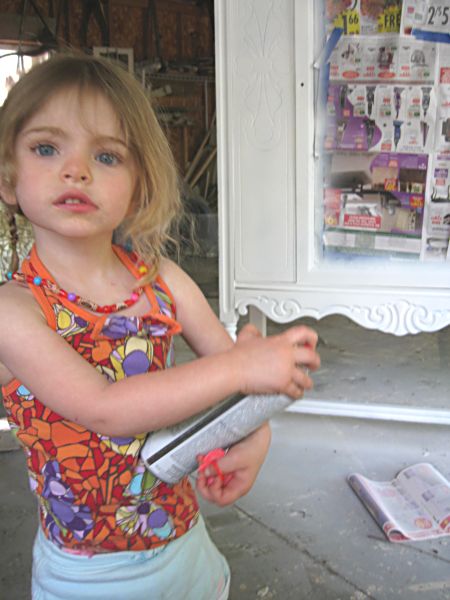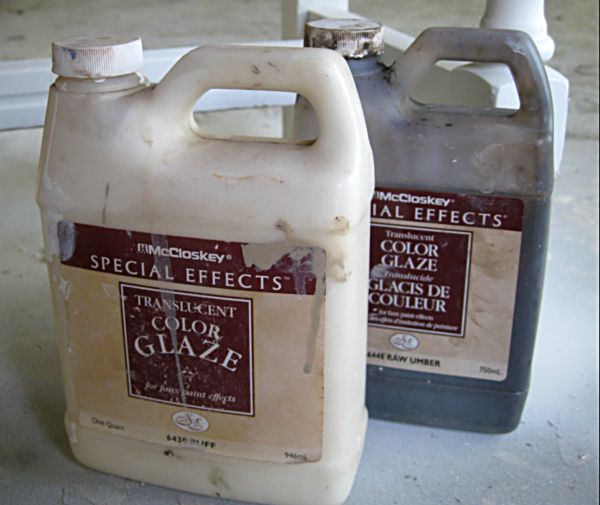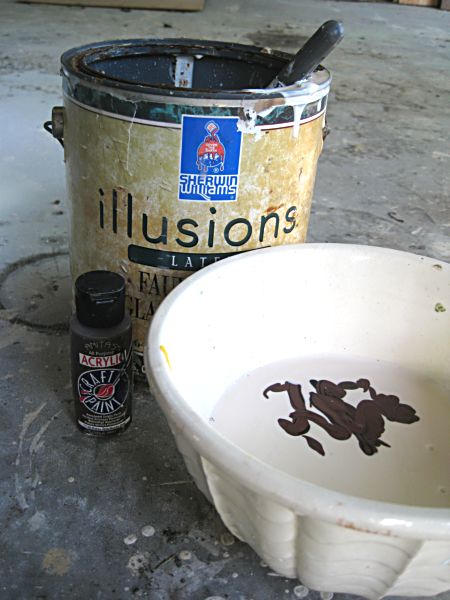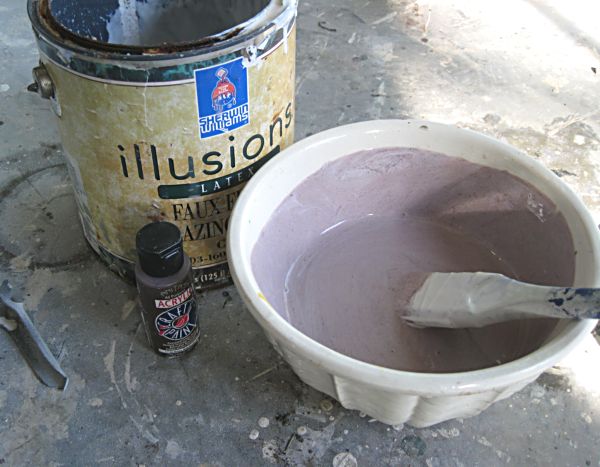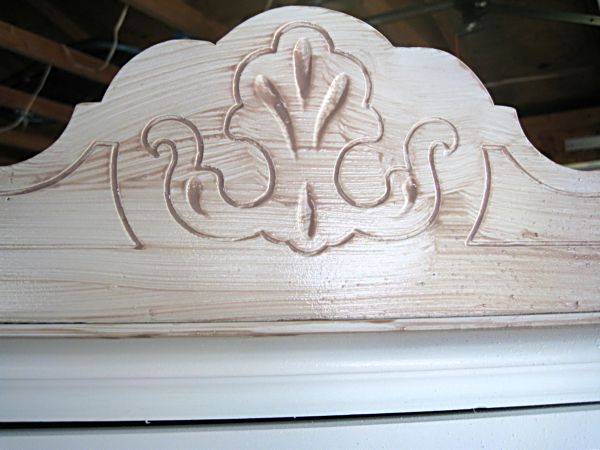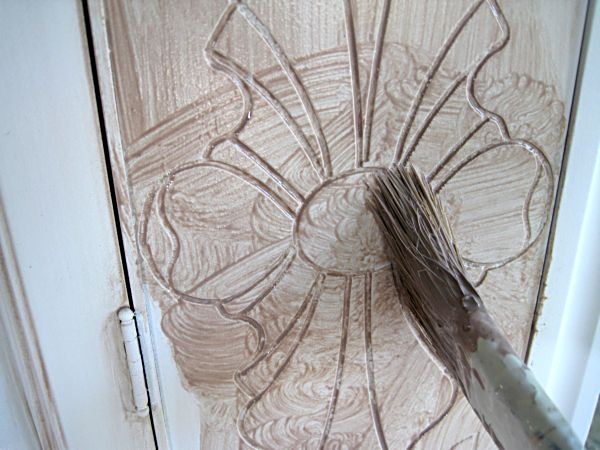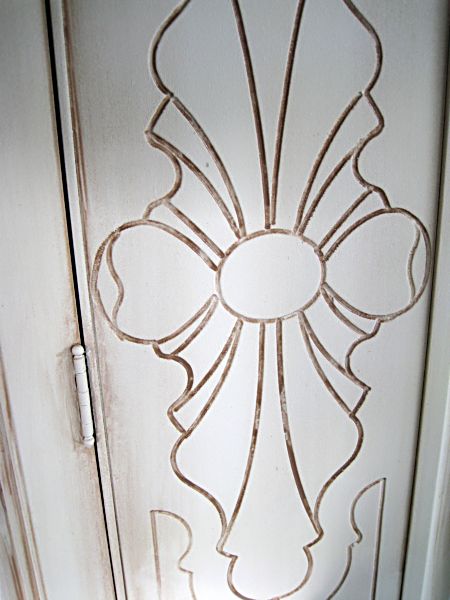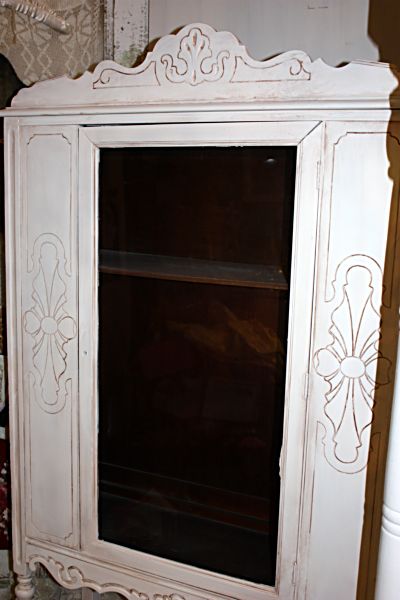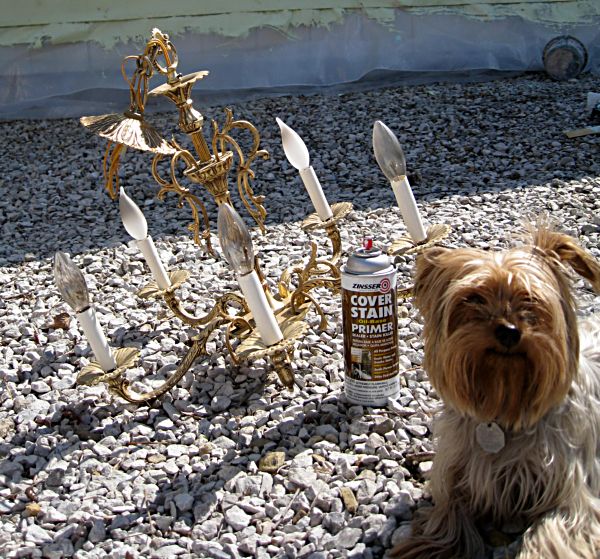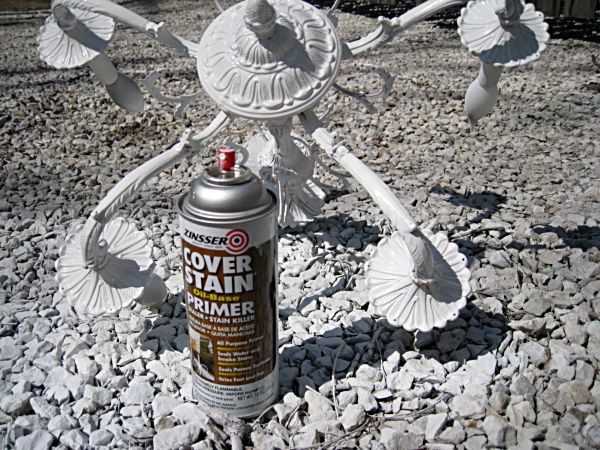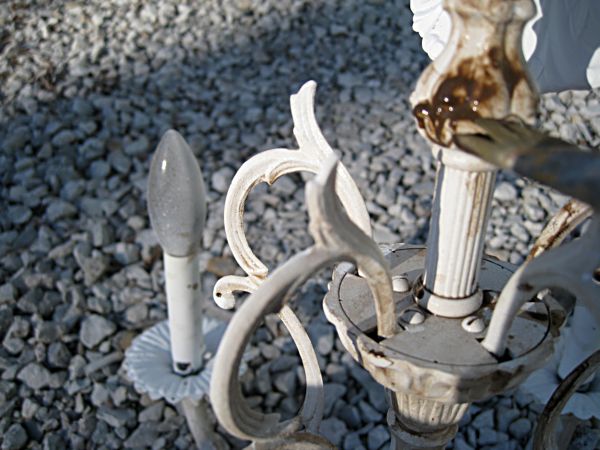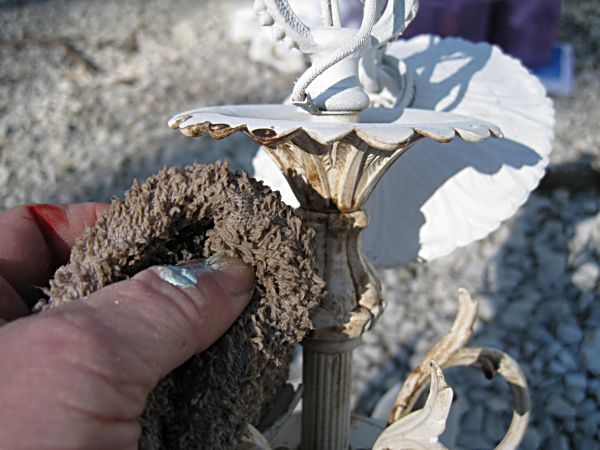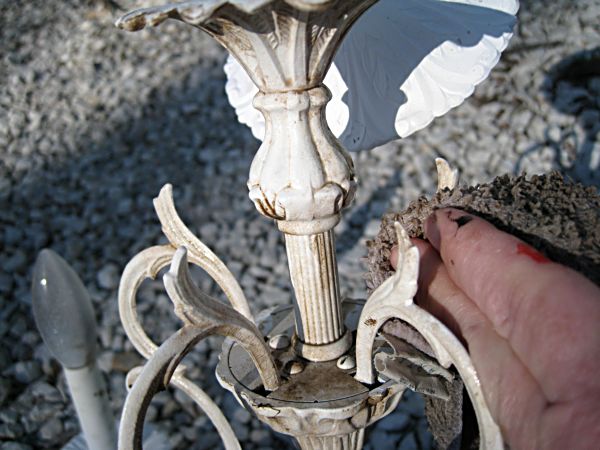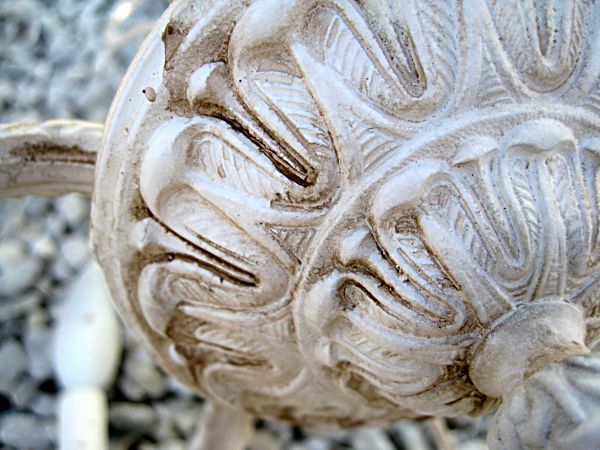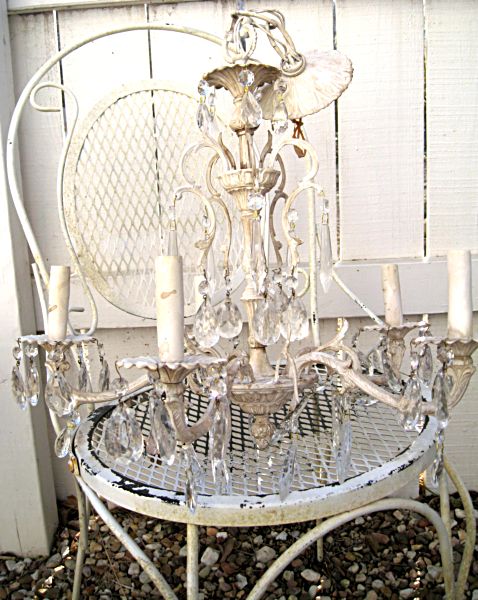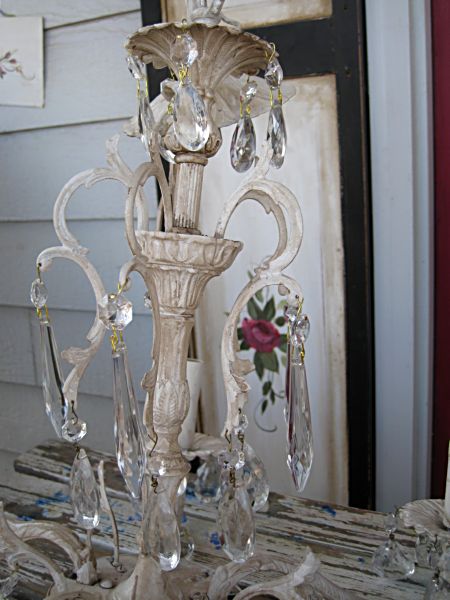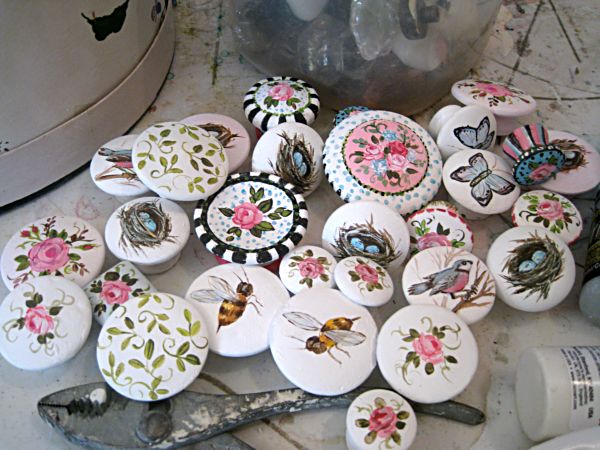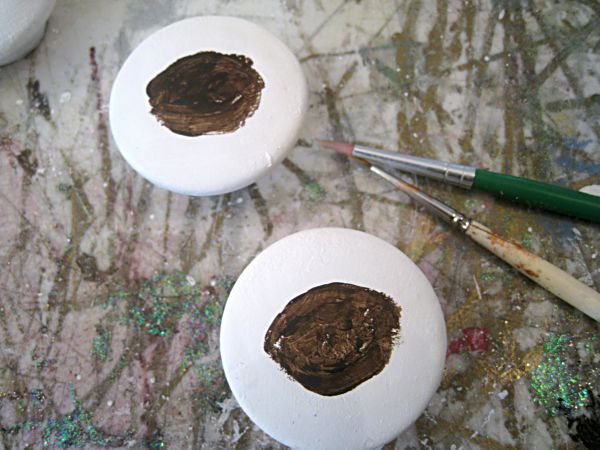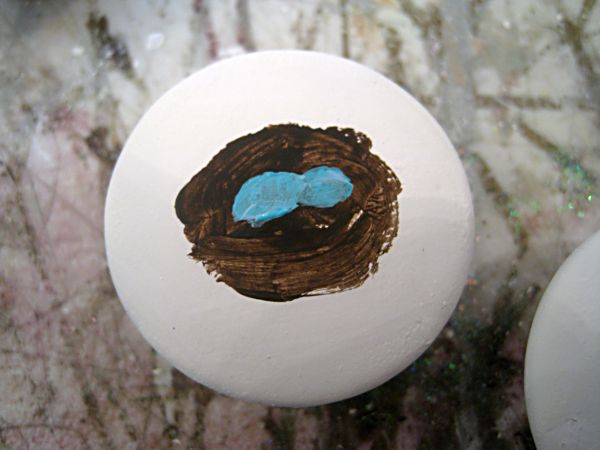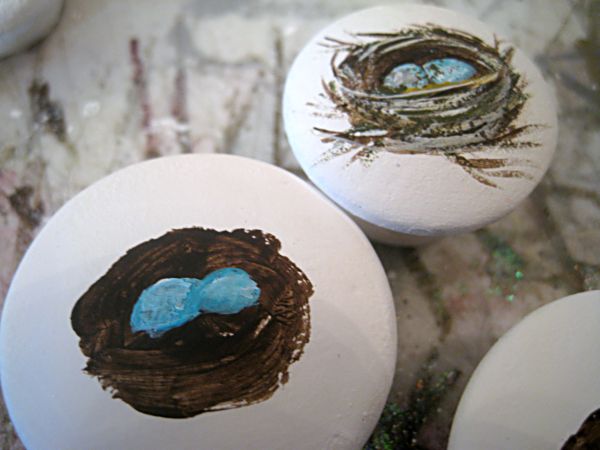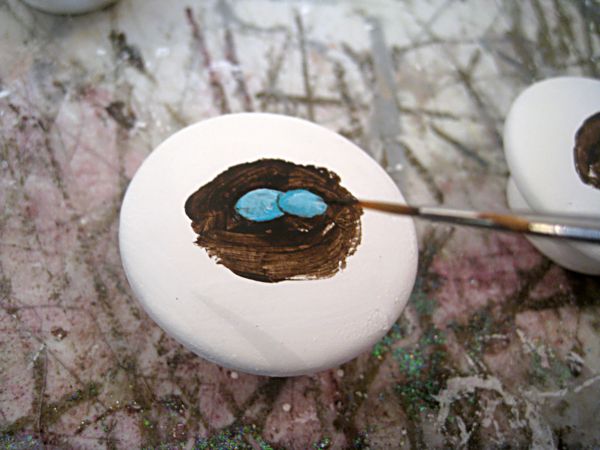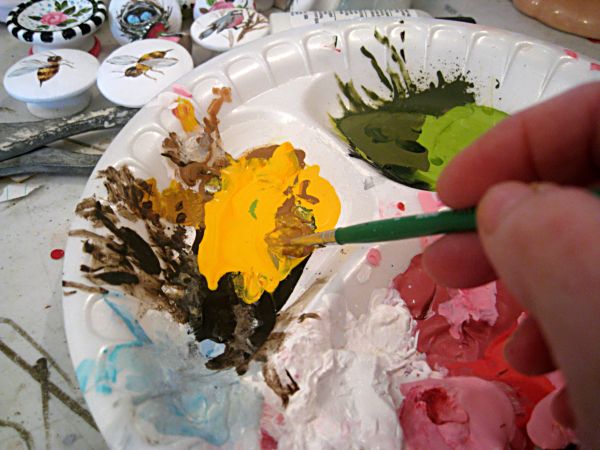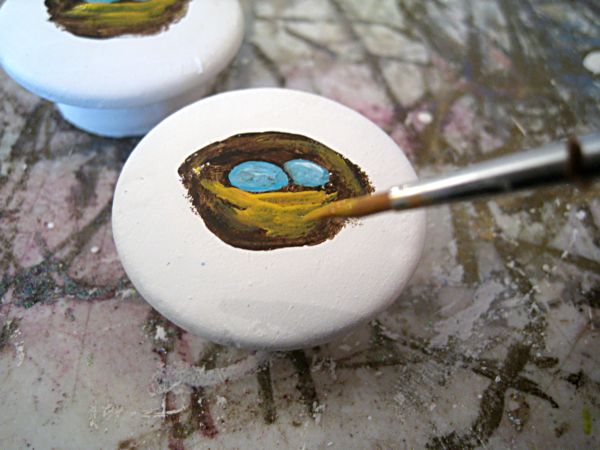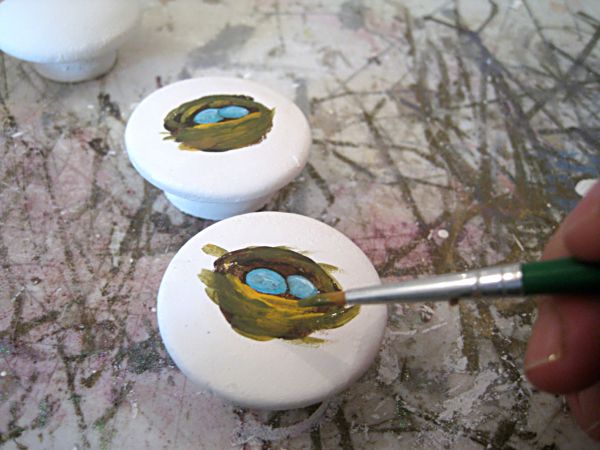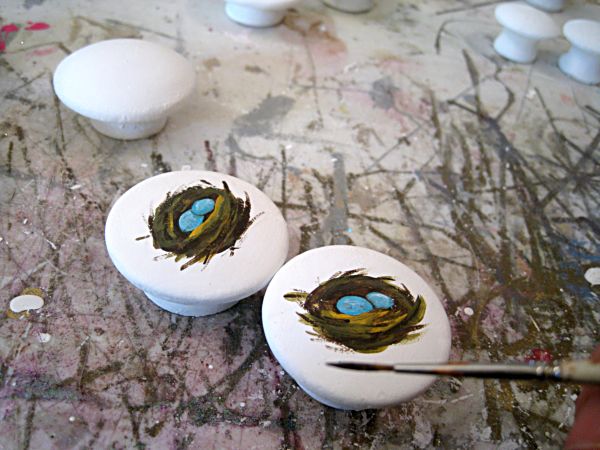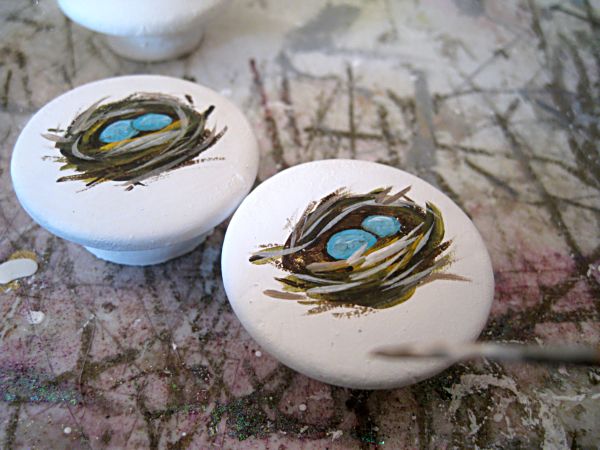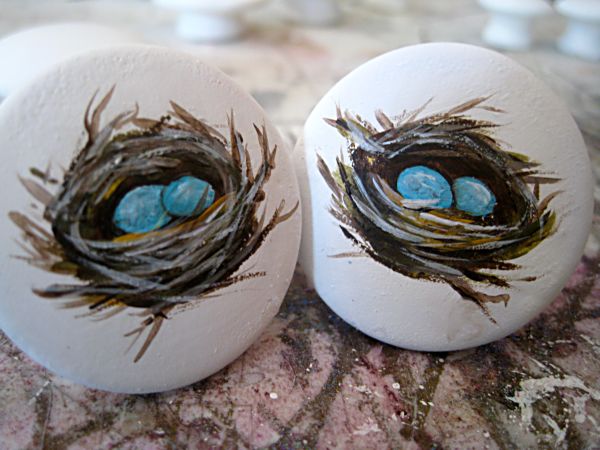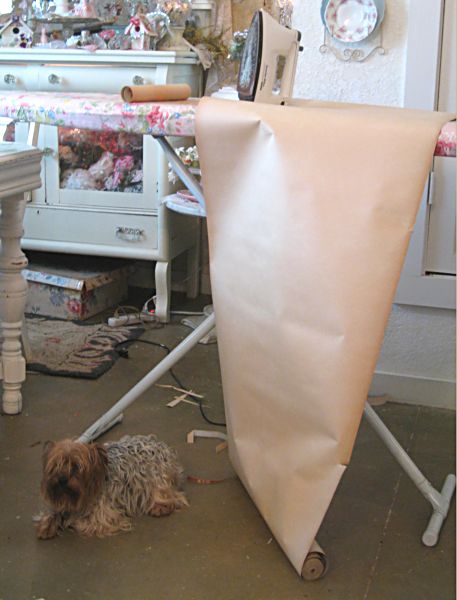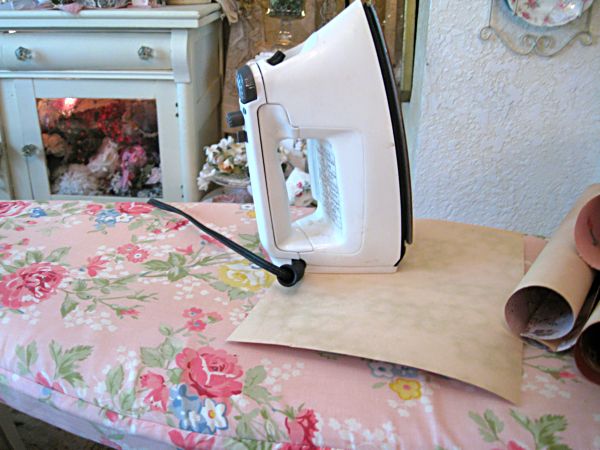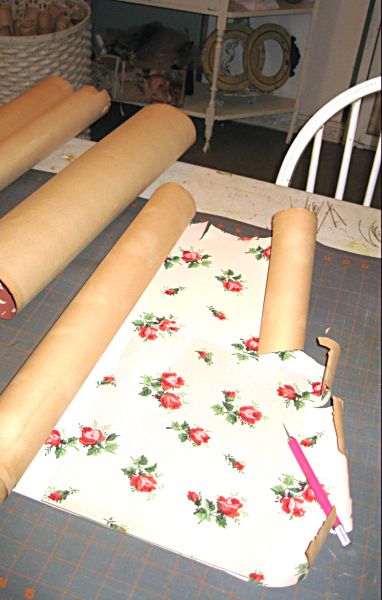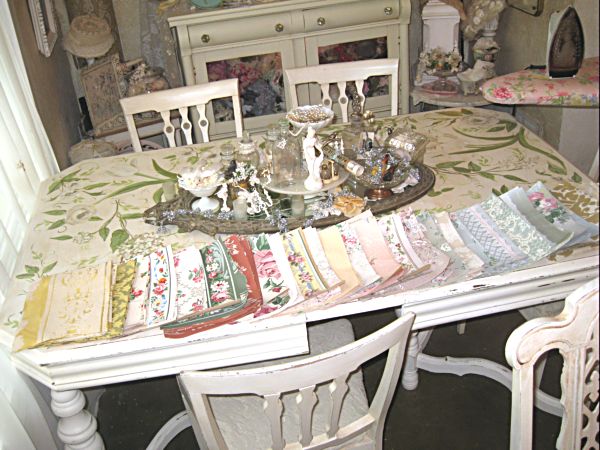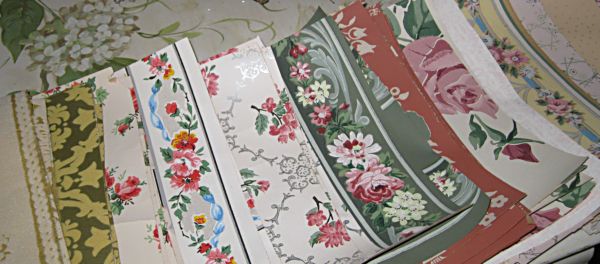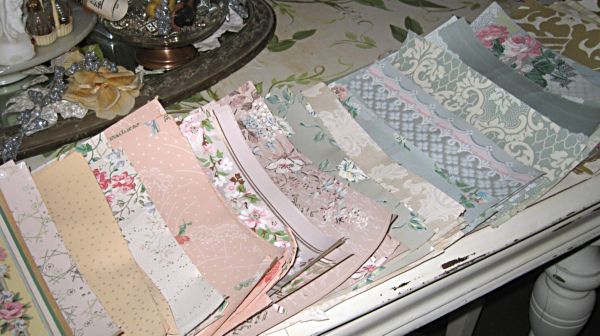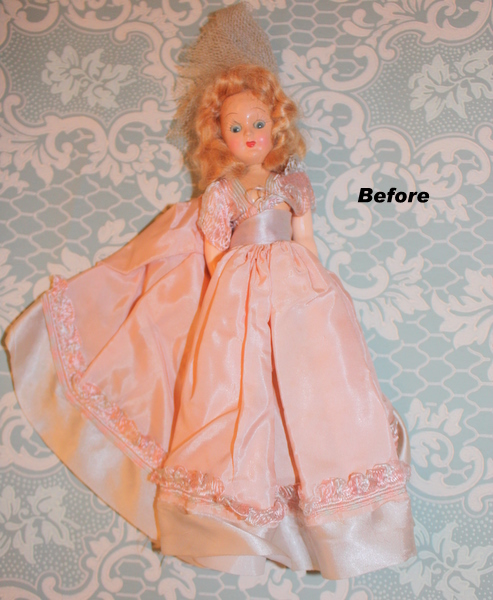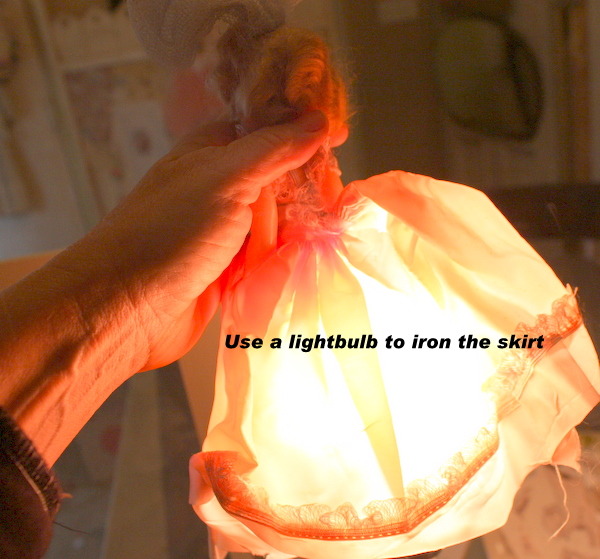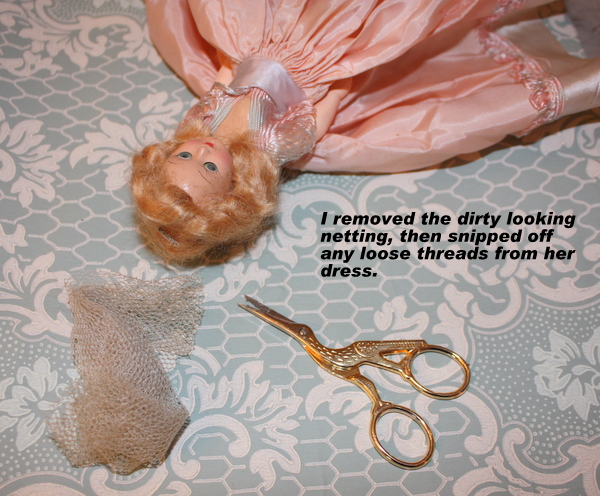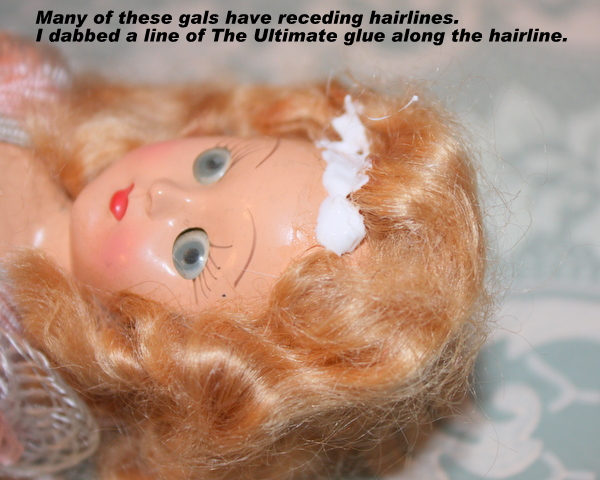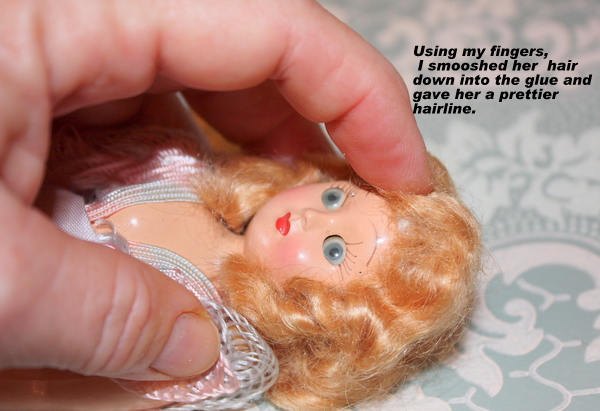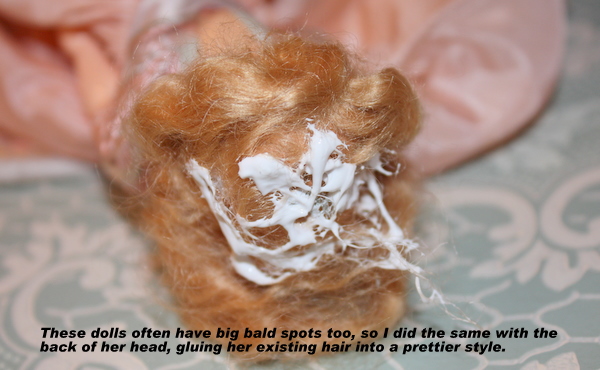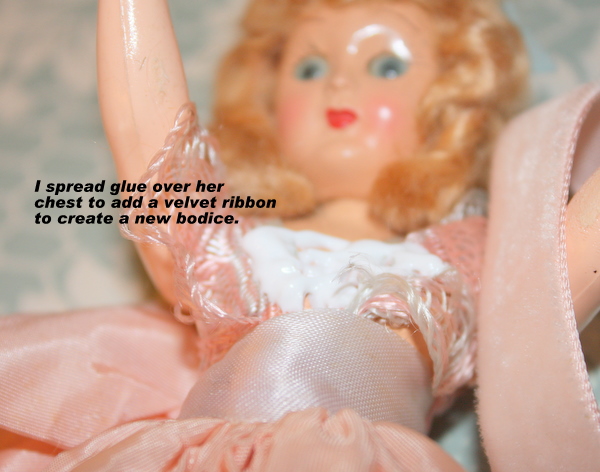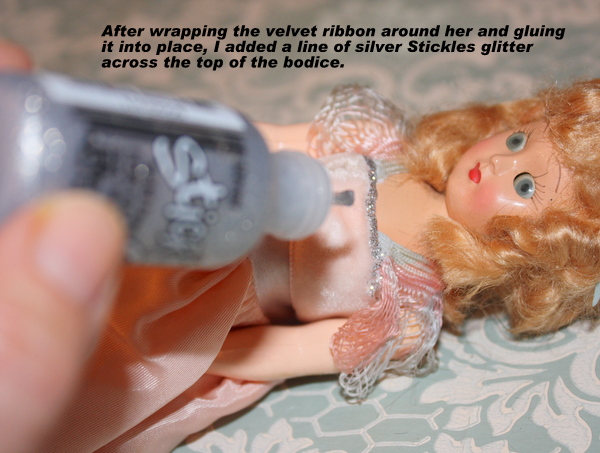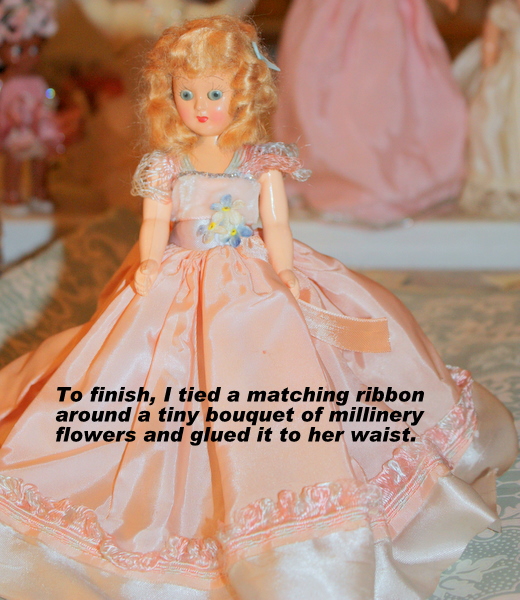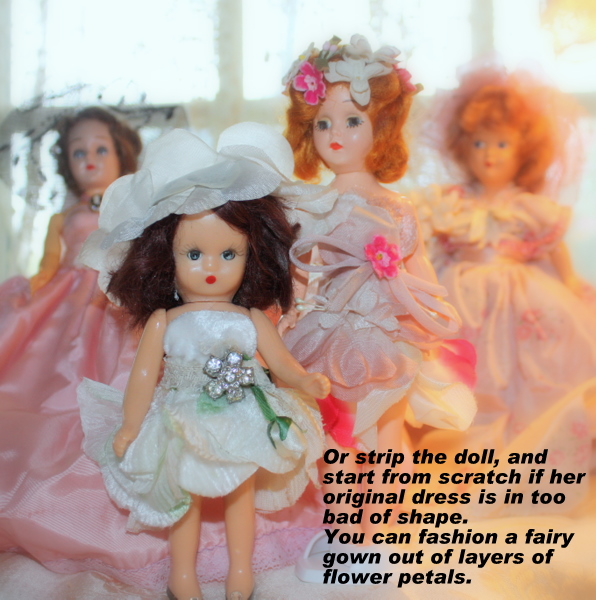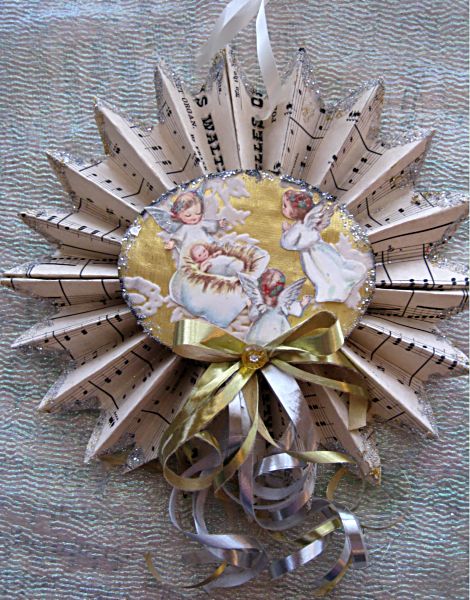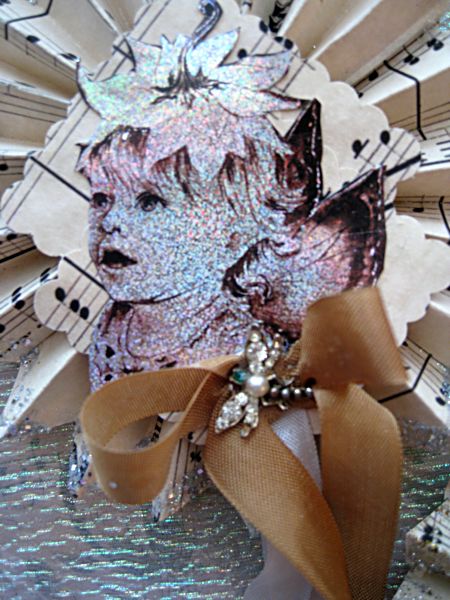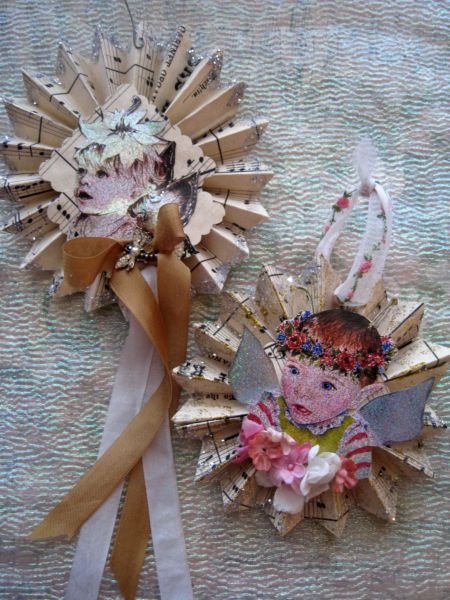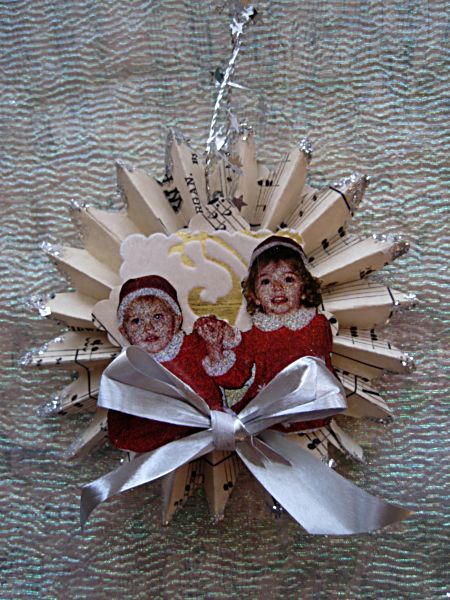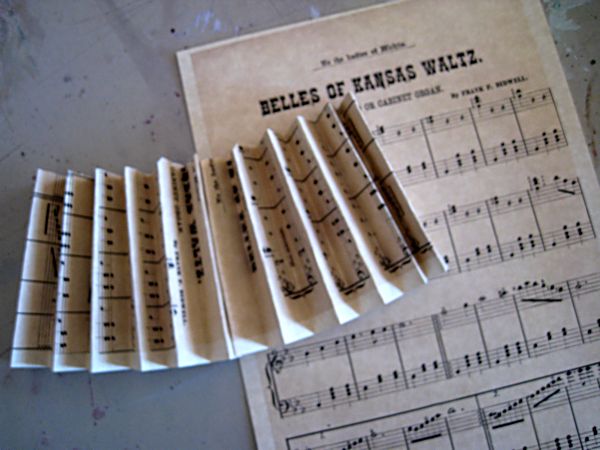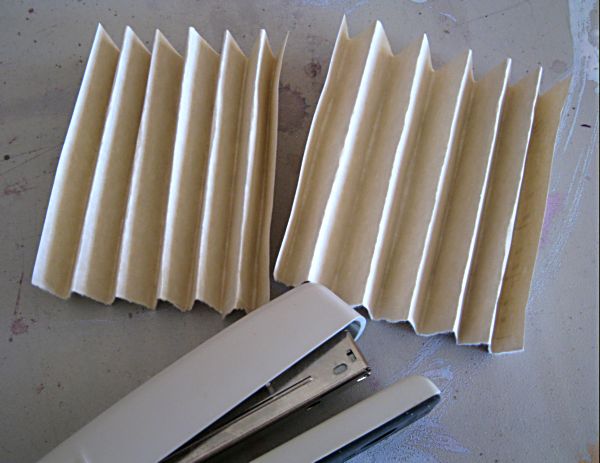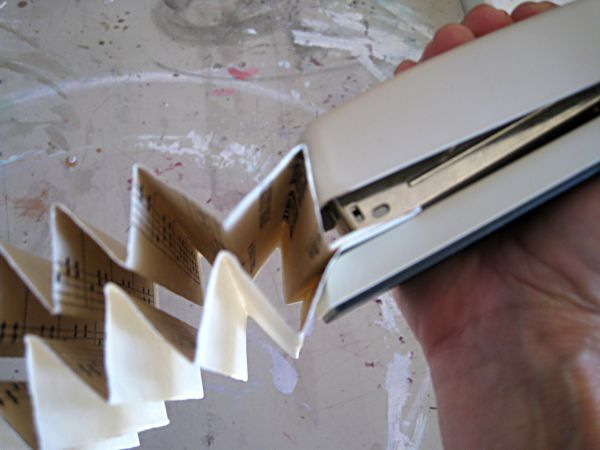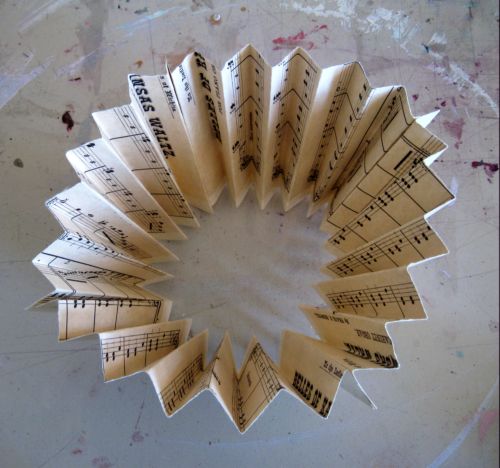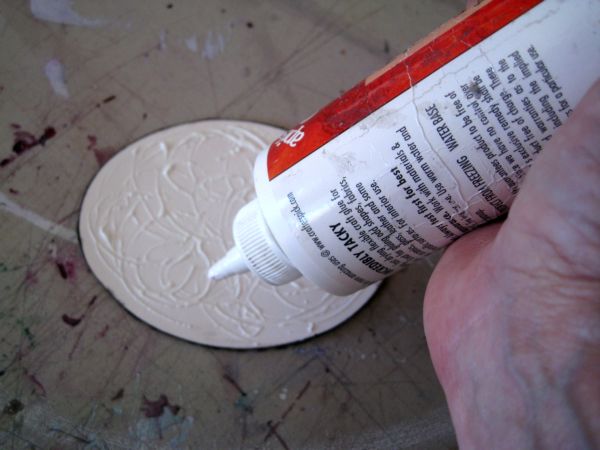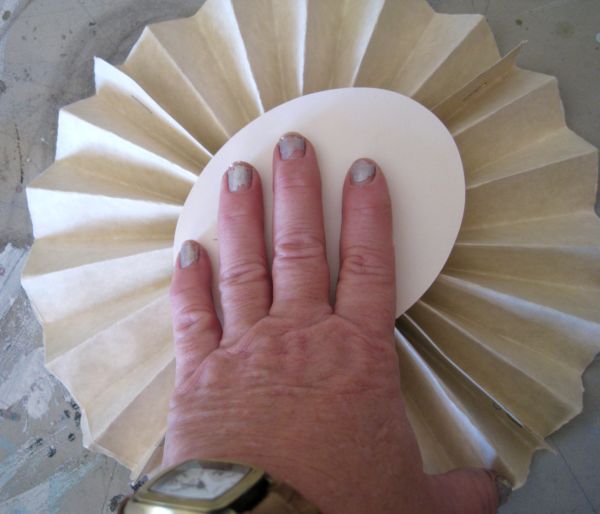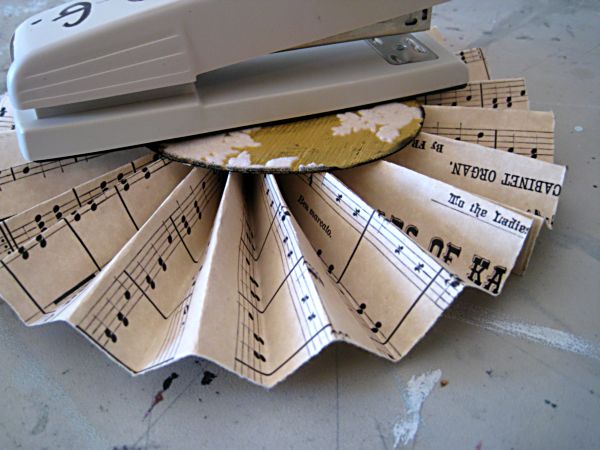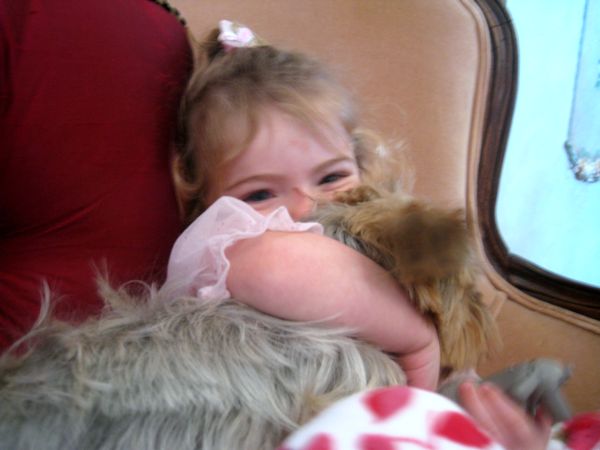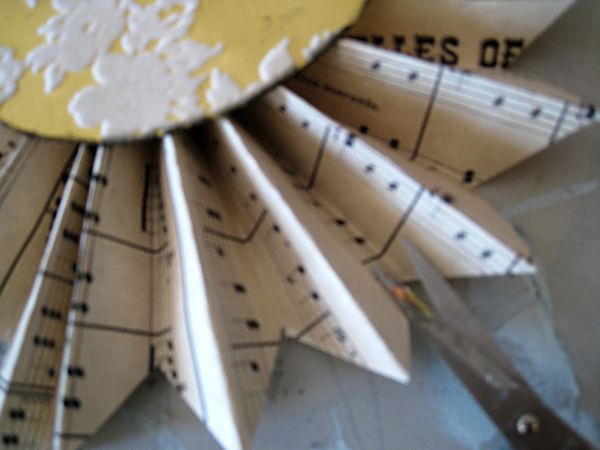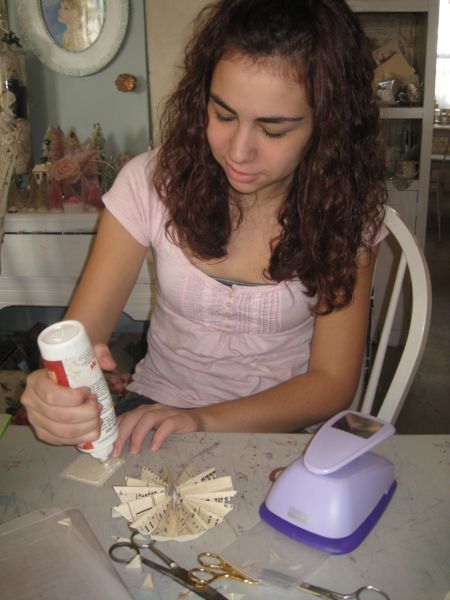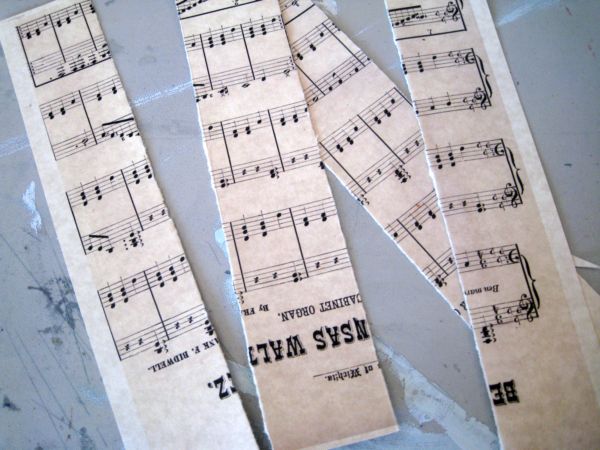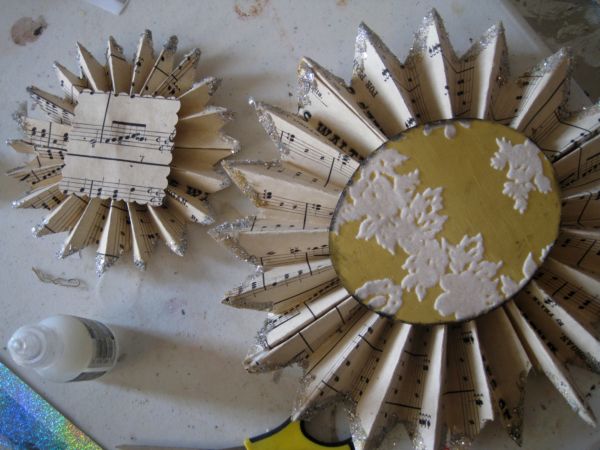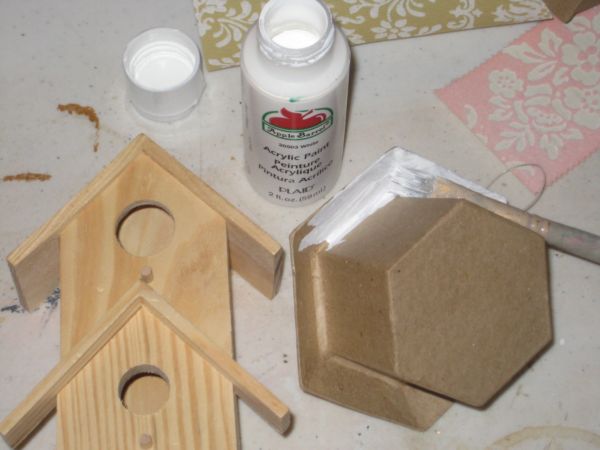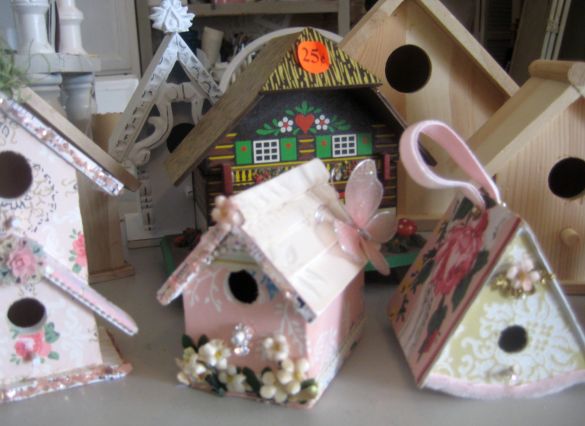I have a selection of free tutorials and some online classes you can order. Please scroll through this page to see what is available.
Twining and Twirling Tutorial, 3 Wire Workshops $20
Beth Leintz and I have put together an online zine/ workshop that features mulitple projects, plus a few surprises and variations on the crafts. Complete instructions along with step by step photos, dozens of images and several “how-to” videos are part of the class.
No ORANGE! – think Dark Shadows, the windswept moors of Wuthering Heights, Daphne DuMaurier’s haunting “Rebecca” or Edgar Allan Poe’s tragic “Lenore”. Many of the images and ideas are great for year round projects, with a romantic, moody feel. Cost is $25
Every image we provide is vintage and from our own private stashes.
All of our projects have been created with a romantic, soft touch. No bright reds or greens, just whites, neutrals, tarnished metallics, and a barely there hint of color.
Along with step by step instructions, we’ll add some surprises and decorating tips as we go along. You will also get some “ready to go” crafts, that you just have to print, cut out, and embellish.
**********************************************************
FREE TUTORIALS
On this page, you will find how-to tips and tutorials that I have done on my blog in the past, some are gathered here in one easy location for you. Scroll down to read some of them here, or click on the links to go directly to the post.
In order, I have:
How to paint and distress furniture plus crackle finish
Custom painted furniture with no sanding
Venetian plaster tricks and painting cabinets with NO paint, NO sanding
Fantasy Photo Editing with Picnik part 1
Fantasy Photo Editing with picnik part 2
Sheet music Christmas ornaments
Painting colorful furniture without sanding
How to make a Hocus Pocus style charm book
How to cover a wall in old book pages
Tips and Tricks for coloring pages
Also:
How to paint a cement floor
Starched lace leaves
Sheet music topped end table makeover
Kid’s crafts– FLUFF STUFF
(scroll down for these, no link to the main blog page to it)
Feel free to email me with any questions you might have.
*********************************************************************************************************************
How to paint furniture (the short cut way)
For years, I had an antique furniture painting business and would paint a dozen or so pieces in a weekend, using my big compressor and air gun to do all the base coats and primers. Now that I rarely need to paint something, and no longer have the heavy duty equipment to make the job easier, I found a short cut way to handle painting something.
Of course, having an assistant helps.
Since this cabinet had glass doors, I covered the glass with newspaper before starting, and set up the piece in an area where I could spray paint and not worry about the mess.
Old furniture comes with many defects time has added to its finish. Personally, that is what I love about it. If I wanted something to look new, I’d buy a brand new piece. I want my antiques to keep their flavor! So, I don’t want to sand away any alligatoring of the old varnish, or any other interesting bits on it.
This BONDING primer (bonding is the key word, here, it will stick to any clean surface without sanding) covers the old varnish, but doesn’t change the look of the finish underneath.
SHAKE IT WELL OR IT WILL BE GRAINY
Spray away. And here is where the short cut comes in. If you plan on painting the piece with a brush after priming, you can leave it the way this cabinet looks right now, kind of shadowy. But, if you are going to do what I do and skip the step where you brush on paint, then you need to use plenty of spray primer.
It took me 2-1/2 cans for this piece. After it was at the shadowy point in this photo, I sprayed over any darker areas and made sure there was good coverage.
Did I mention how much it helps to have assistants? I gave this one an empty can to help with. I’m glad it was empty, because she tried to spray paint the world with it. If she ever gets hold of a full can, I might be in trouble.
Primer MUST NOT be left without a top coat. But, who says you have to use paint over it?? I use glaze, which is mixed with latex paint.
You can buy it pre-mixed like this kind, which is handy for large projects, but can be pricey.
Or you can buy glaze by the can, and mix your own color. I use those cheapo 2 oz craft bottles of acrylic paint.
This is really too much for the cabinet, but I liked this color and wanted to make extra to store for something else. It never hurts to make up a bit extra, because you’d hate to run out in the middle of glazing your furniture.
I’d say 2 cups of glaze and 1 ounce of craft paint (any color, any brand) is plenty.
The color I chose was a dark brown. Notice how it looks more like chocolate milk after it is brushed on? Well, that is because the glaze is milky. But you have to remember that the glaze will dry CLEAR. So the color you chose is what you end up with, not the milky version it is while still wet!!
Start at the top and work on one small area at a time. Paint the colored glaze on thickly, and get it down into all grooves. After one section is painted, wipe it off with a wet, soft rag.
I use old tee shirts, and keep a bucket of warm water nearby for rinsing. Not that warm water is better than cold, but it just feels better when you wring the rag out.
And rinse often!! Your rag will fill with glaze fast. If you don’t keep rinsing and wringing it out, you’ll have a soppy mess and will just be pushing the glaze around, not removing it.
Don’t worry about perfection. Some areas will be more heavily glazed than others, that makes for an interesting finish. And if you were lucky enough to have a piece of furniture with lots of crackled finish to start with, then the glaze will really look nice when it settles into those cracks!
While the glass is still covered with paper, spray a can of satin finish clear coat over the project to seal it.
After you take off the newspaper and tape, you might have to scrape a little paint off the window here and there with a razor blade, if you tape as badly as I do.
I chose not to paint the interior of mine, instead I lined it with vintage wallpaper.
HINTS
You can skip the paint step, IF- you are fine with using bright white as your base color under the glaze. Canned primer doesn’t come in tinted colors.
You MUST cover every inch of the primed areas with painted on glaze! Primer is not meant to be left uncovered. But glaze is quicker and easier to brush on than paint, because you are just slopping it on heavy and will be wiping it off.
Top coats are important, for durability. You can quickly spray one, or brush it on. If I am brushing it on, I like to use Min-Wax Polycrylic. It is water based, no smell.
Make sure the piece is clean before you paint it. Wipe it down with a damp cloth, and if it is greasy use Windex.
Only use BONDING primer!! Be sure the label says something like “will stick to glossy surfaces”. I buy this brand at Home Depot. If I am brushing on primer instead, I use “The Gripper” by Glidden. SHAKE IT!
Primer can be painted over soon after using it, but sometimes it takes days to “cure”. So, if you have painted something with an extremely high gloss finish, try to leave it set and don’t mess with it for 3 or 4 days. The finish hardens, and won’t scrape up after that.
If you get over spray on the glass, like I did, scrape it off right away, or it just gets harder to do.
It was pointed out to me that spray paint is dangerous to inhale and I didn’t mention safety precautions. Please, use proper ventalation! I use the garage, but am right inside the open double doors. Also, the baby only was playing with an empty can, she was not actually involved with spraying or breathing in the spray. I treasure each and every one of her brain cells!
***************************************************************************************************************************
How to paint and distress furniture
April 25, 2010
I’ve repainted my dining table and chairs, along with a buffet to match (kind of). I like using similar colors and techniques, but not having all the pieces of furniture be exactly the same.
The buffet (hardware and all) got painted with bonding primer tinted gray. Then white washed with ivory glaze, and that was wiped off with a soft, damp cloth.
Then, I took the cloth with the white glaze on it, wadded it up, and patted the buffet, to make a marbled look. When dry, I sanded a bit here and there, not much, and clear coated it for protection.
Here is a little tutorial on how to paint distressed looking furniture:
Please note that the trick to doing this technique is to NOT BE PERFECT. All the little imperfections are what make the finish interesting.
I started with this factory finish from the 60’s. Not bad, but not exactly to my taste. I wanted an older look and thought this dining set looked dated.
The first step was to brush on tinted gray bonding primer. I used Glidden Gripper. It came already tinted gray.
I used a cheapo, flat brush about 2 inches wide. Kind of bristly and rough.
The primer was brushed on in a messy way, not covering up the whole surface.
I’d recommend taping off the edges and covering fabric if you don’t have a steady hand.
Second step same as the first, but with creamy white paint ( I use eggshell finish). Messy, uneven coverage is the trick!
Next, rough it up with sandpaper, as soon as it is dry to the touch. If you wait too long, you have to sand harder and it takes the paint off to the bare wood. I wanted the original colors of ivory and gold as well as my gray layer to show through.
After sanding here and there, cover with a top coat. I like Minwax Polycrylic. Its water based and goes on easy for a durable finish.
The table was done the exact same way, with one addition. Before putting on the top coat, I brushed it with a heavy coat of porcelain crackle glaze. Not the entire table top, just random strokes here and there.
*******************************************************************************
CRACKLE FINISHES
After repainting the table and chairs, and painting the buffet gray, I was still not satisfied. So a few months later, I did a redo on the framed print and another one on the buffet.
The frame was really old and probably valuable so, I took my time and made sure the frame stayed looking old. Well, “took my time” is all relative, I guess. I paint fast, I had the buffet, the small mirror frame, and the large, antique frame done in about 3 hours while I chatted with my mother-in-law who was having tea at the dining table.
Here is what I did:
- Primer, good bonding primer. I just tucked some wax paper behind the frame and painted it on the wall right where it hung. The wax paper protected the wall from my brush.
- A coat of ivory/bisque eggshell paint
- Thick coat of porcelain crackle finish (I worked on the buffet while this dried)
- Next, I brushed on and wiped off coffee with cream colored glaze
- After that dried, I lightly sanded all raised areas. I was careful to do this lightly with a sanding sponge, because much of the ornamentation was plaster. I wanted to get down to the gold paint, not the white plaster.
- I added another layer of crackle glaze.
- As the crackle glaze dried, it had a chemical reaction with the exposed gold paint and turned a greenish tint, like a copper patina. (this is a trick I discovered accidentally a while back and love to use. Its unpredictable but pretty)
- Over this, I brushed on and rubbed off an ivory glaze and a sepia glaze, randomly putting them over the frame, some over lapping, some spots one color, some spots no glaze.
- After it all dried, it was a little too green, so I dry brushed the ivory/bisque colored base paint over the areas that were too vivid.
- Then a little more sanding to bring out the dark wood and more of the gold paint underneath.
This was a lot of steps, but I think they paid off, the frame looks like it was out in someone’s shed being stored away for years.
The main trick is to not be too perfect. Nature doesn’t age things perfectly. Sometimes the trick to a good faux finish is to be messy.
I did NOT cover this with clear coat. If I had, there might have been another chemical reaction with the newly sanded spots with gold paint showing through. It would have turned more green after the clear coat dried.
The buffet got a very similar treatment, with a creamy white painted streakily over the existing gray, so the gray showed through.
Then, crackle glaze, and sepia brushed on and wiped off over the crackle, after it dried.
I used the sepia very heavy in corners and edges.
When it was all dry, I used an acrylic clear coat over the entire piece.
I love crackle. Its tricky and unpredictable, but wow, when it comes out nice, it is really something. Don’t ever use too much, use it selectively in spots. Not on every single inch of the piece. And feel free to add another coat or two if needed, and you’re not thrilled with the first. (this only applies to porcelain crackle, weathered crackle is a different product. Read your labels!!)
****************************************************************************************************************************
How to paint furniture with no sanding and lots of personality
This vanity started out dark, and is a new piece from Lowes. I bought it about 6 years ago for only $368 and it came with the marble top, sink, and the faucet already installed.
This is how it began. But the time came to lighten up, and this is how I did it:
I DO NOT SAND. I never do, and I’ve painted my little heart out for years.
The key is the primer. The label of the can must say “BONDING” or “WILL ADHERE TO GLOSSY SURFACES” Never, ever use dry wall primer. Its not the same thing at all, and your paint will just scratch off.
The last few years, I’ve been very happy with Glidden’s Gripper. In this case, I bought the gray tinted Gripper primer.
You can see, I don’t put it on perfectly. Notice the little skips here and there in the gray where the dark wood peeks out? Not big ones, just little misses.
The key to being a good faux finisher is to be a bad painter. Yep, you gotta be a little messy and non-perfectionistic.
And to use a crappy brush. You can’t get much worse than this. I love these little cheapo, 99 cent brushes from Walmart. They give the paint job character with their uneven bristles.
After the primer dries, I pounce the paint (I used Behr glossy white) on with the old brush.
Its a constant dab, dab, dabbing with the brush. First you dip the brush in paint, then dab it off onto a rag, then pounce it onto the piece, over and over and over.
I tell ya, its a lot easier to do a small piece of furniture or a lamp this way than to do a whole wall. If you are doing something big, try a larger brush and take some advil.
This is the look you want. With some of the gray primer peeking through, as well as a bit of the underlying wood.
The paint goes on heavier in some spots than others, but please make sure you don’t have blobs and repetitive patterns of brush marks.
To avoid that, turn your brush as you pounce. And go over the same areas more than once to blend as you dab.
After the white dried, I did the same thing, with the same brush, using a coffee with heavy cream colored paint, mixed half and half with glaze to thin it down and make it more translucent as it dries.
With this step, I pounced the creamy color over the white, layering it heavier in corners, and slightly wiping it off on the high points of the embellishments and trim.
If needed, you can add a bit more of the white over the cream to soften it.
Since I used a good primer, and a high gloss paint, the finish is really durable and doesn’t need a top coat.
*********************************************************************************************************************************
Painting furniture with no sanding, some short cut tips
I’ve done a few other furniture painting tutorials (you can find them on my side bar, along with a lot of other how-tos), but those were mostly whites, creams, grays. Not everyone lives with “low color” like I do, a lot of people like some flash. I know my family does, they all think my neutrals are boring. So when I paint something for them, its usually bright and cheerful.
So, I thought I’d give you some tips for using deeper colors.
Our Hippy Chick was given this two piece set by her dad, it used to be his mom’s. It looks okay as is, but dull for a fairy’s bedroom, and this was meant to go in Sugarwing’s room at her mommy’s house.
Its been painted a number of times, looks to me, like the latest was a 1960s antiquing technique.
When I don’t know who painted a piece or what they used on it, I always coat it with a BONDING primer, so my own paint will have good adhesion. If I painted it myself and know that it was latex with no poly top coat, I skip the primer and just paint it as is. But since so many things I paint are garage sale or flea market pieces, I have no idea who used what on it and I use primer in case.
Over the years, I’ve tried many of the brands of primers. Currently this is my favorite water clean up one.
There are gobs of primers out there, be sure that you are using a Bonding primer, that says it will stick to glossy surfaces, do NOT use dry wall primer, that is a completely different thing. Kilz will not work unless you also sand.
I NEVER ever sand or strip the piece before I paint it. Life is too short!
Now, if you are painting something really tough, like laminate or a high gloss laquer, maybe a quick sanding wouldn’t hurt, just to give it some tooth. But for most furniture, a bonding primer will be just fine with no sanding at all, as long as the piece is clean.
For darker or deeper colors, use a gray undercoat to prime with. The white one is too glaring and will take more coats to cover it.
Speaking of coats, use good paint. Wall-mart paint is cheaper, but you use more because you are going to use more coats. More time, more work, more paint.
A quality paint saves you quite a bit. This Behr is my fave, it comes in many colors and usually only takes one coat.
For this, I let Sugarwings pick out the color herself. Its a Disney shade that is carried by Home Depot.
I chose Satin finish, that should hold up to little fingers and heavy use with no top coat. This is a good paint that will last.
After cleaning the furniture, decide if you want to change the hardware, if so, you might need to fill in the holes with putty, let dry, sand and then repeat. After the piece is painted, you drill new holes to match the new hardware.
If keeping the knobs, do you want contrast or do you want to paint over them? If this was going to be a cream colored piece, I’d have liked the contrast of the aged brass. But for a kid’s room, I wanted the pulls to blend in. So I left them in place and just primed and painted right over them. (when I was all done, I dry brushed another shade over them so they would have a little more interest)
Pull out any drawers, and set them up on their backs to paint. It will save dripping.
Don’t ever paint the sides, or the bottom of the drawers, or they will stick like crazy! I like to wax the sides of each drawer, for an easy opening and closing.
Also, I paint the interior of each drawer, just to make them feel clean and fresh.
If you are doing decorative work after the paint dries, acrylic craft paint works fine. I made simple stripes in multiple sizes with different sized brushes, and polka dots with a round sponge. Then painted some flowers on the bottom drawer, added vines to the doors, and accented the trim with various shades.
I am not a perfectionist. I like old furniture to look like old furniture. If its been painted a few times in its life, I like that to show. I don’t sand it down before painting, or between coats. If you like the perfectly smooth look, you’ll need to sand.
When painting around glass doors, make sure you scrape the glass off with a razor blade within a couple days of doing the job, or the primer will be hard to get off.
If you are painting a two piece set like this, let the paint “cure” for a few days before stacking them.
Any questions? Feel free to contact me.
Tools you’ll need:
- bonding primer
- quality paint
- opener
- drop cloth – unless like me, you don’t worry about your workspace floor! You can see mine has seen some painting over the years
- a wet rag is nice to keep handy
- paint brush
- small sponge roller (for big, flat areas, this sure speeds things up)
No sanding, no stripping, no paint, custom painted furniture, plus a sale and another upcoming class
My visit to California to stay with my pal, Kim, was such fun. Did I mention what a PERFECT hostess she is?? Her family made me feel very welcome. Their house is beyond pretty, but is also comfortable and homey too.
I’m the kind of person who likes to be doing stuff, so when I stay with someone, I’m always happy when they let me play with paint and redo something in their house. Once while visiting the Guncles, they let me repaint all their kitchen cabinets, and on a trip to Indiana, Sissy let me redo her bathroom. I enjoy the process and like to see the changes, and when the host or hostess works along side me, its good chatting/bonding time.
Kim’s bedroom was filled with a set that she’d had since she was a little girl and it was sentimental to her, but needed an upgrade.
While I was there, we had two classes for all the ladies who attended her day long gathering, one was a wire wrapped wreath with a nesting bird.
I’ll be teaching this one again at Paper Cowgirls in Texas if you are interested-
And you know me, it will be the Good Stuff! All filled with vintage goodness.
The other class we did in California was a faux finish and paint technique lesson that I showed on a small box.
Kim and I used the same ideas from the painted box lesson to redo the nightstands in her bedroom.
No sanding, no stripping, no paint!
Yep, NO PAINTING
We had Glidden Gripper, a water based, bonding primer tinted to a color she liked (Martha Stewart’s “glass of milk”), and painted two coats of it onto the pieces. Right over the hardware and knobs.
Then, we scuffed it up with sandpaper to distress the corners and edges.
To jazz the nightstands up, she covered the tops in vintage sheet music. To decoupage ripple free, we painted the glue onto the table top, then dipped the paper into water to soften it, laid it into the glue, and then did a coat of glue over the top.
In the front corners of the table tops, we hand painted some sweet little vines for a special touch.
So, at this point, its primed, distressed, and decoupaged.
Over that, we brushed on a creamy brown glaze, and wiped it off. We glazed over the sheet music too.
Apply the tinted glaze heavily in corners and around the edges of the piece, and wipe away toward the centers. You want to leave the corners, cevices, and edges darker than the flat, smooth parts and centers of the doors, top, and sides.
The last step was Minwax Polycryllic, a clear, water based topcoat.
**********************************************************************************
March 16, 2009
Lighten up! (or how to paint a chandelier)
Yesterday was a junking day, and a really good one at that. We all bought stuff we loved and at good prices, you just can’t beat that! One of my purchases was this $58 brass chandelier. I needed one to light up my space at the upcoming Miss Frenchie’s sale.
Today was definitely a perfect springtime day! 70’s and sunny, and not too much of that Kansas wind. So, I took advantage of the sun, and took this chandy outside for a do-over.
Here’s how:
1- Wipe off the dust, if it is really dirty, use Windex.
2- Now, this might sound like odd advice, but it really is smart and works. I’ve painted dozens of chandeliers and have found that this is the easiest way to go- screw burnt out light bulbs into the sockets before painting! That keeps the paint from getting into them, and is much simpler than using tape to cover the sockets. Really.
3- Spray with a BONDING primer. The label MUST say “bonding” or “will adhere to shiny surfaces.” SHAKE IT WELL OR IT WILL BE GRAINY
4- Spray into all the nooks and crannies, let dry, turn over and spray that side. You will probably need to turn it around at least 3 or 4 times to get every angle.
5- Double check and see if you missed any spots!
6- Mix a deep brown paint (acrylic craft paint, like Apple Barrell or Delta) with some clear glaze.
7- Dab on the brown with a small, soft brush, doing one area at a time. Make sure you get it deep into all the cracks.
8-Lightly wipe away paint with a wet rag, leaving it in the recesses.
9- Repeat all over and all around the light. Just like when you sprayed the primer, turn it every direction and make sure you didn’t miss any spots.
10- Go for an uneven, messy kind of finish, darker in some places than in others. You don’t want it to look like it was done perfectly at a factory!
11- When dry, spray with a poly clear coat. And remember about flipping it over and going for every angle!
12- Add crystals, I prefer to use different sizes, not all uniform. If some of the holes are plugged with paint, poke through with a toothpick or small nail to clear it out.
Ta Da! Only 12 steps to a whole new look!
And please note, I didn’t use just any spray paint. If you do that, the glaze will wipe off. It has to be a BONDING PRIMER for the water based glaze to stick!!!
*****************************************************************************************************************************
How to paint kitchen cabinets
The other Karla and I have been promising Beth we’d help her with her kitchen for about 6 months and finally did it. It only took about 6 hours for the three of us. 6 months, and 6 hours, that is.
Beth had the doors washed, areas taped off and covered where needed.
So, we got right to it. The bonding primer was tinted to the paint color, which makes it easier, since primer can be such a blinding white.
ALWAYS USE A BONDING PRIMER.
Not primer for wallpaper.
Not primer for fresh drywall.
Not paint and primer combined.
Somewhere on the instructions or label, the can should say something like this ” will adhere to glossy surfaces”
You will not need to sand or strip the wood, this primer will be ideal for gripping the wood and giving the surface some “teeth” for the paint to hold on to.
Please note, that primer needs a few days to reach its full strength, and it can be scraped up while fresh.Once it has cured, though, its tough as can be! If you want to distress your finish with sandpaper, please do it very soon after painting.
We left the doors on, and painted over the hinges. The door pulls were removed first.
We were in a hurry, so really didn’t let the doors dry as much as we should have, so I knew that the opening and closing was going to create some cracks in the drying primer on the dark bronze hinges and that might peek out of the paint a bit, but wasn’t worried, because I knew we were antiquing the finish when the paint dried and it would all blend in.
Sometimes, its smarter and faster to just go with the imperfections and make them work in your design!
After priming, we put on about 2 coats of creamy, satin finish paint. Then went out to lunch while it dried.
When we got back, we mixed 2 oz of acrylic craft paint into a bowl of about 2 cups of clear glaze.
While the glaze is wet, it looks milky, but it dries clear. Always remember that the mixed paint and glaze will dry on your furniture to the same color of the paint you mixed in.
Paint it on, and wipe it off with a clean, damp cotton cloth (an old tee shirt torn up is good), heavier in the corners and indentations.
After putting it on and wiping it off so the corners, indentations and edges were darker, we wanted a bit more of it showing, so, we pulled a glaze dipped brush down with the wood grain, to create striation marks.
I use a cheapo, 99cent brush, instead of the specialty faux finish brushes sold to do this with.
If the lines seem too dark, or heavy, go over them again or blot them with your cotton rag.
After that, we wanted even more design the to project, and decided to fleck glaze dots all over the surface.
Its easily done with a toothbrush, and the same glaze used for the faux treatment. The speckles should be random, and not too dark or big, and never drippy. Blot if needed. And don’t get too carried away.
The cabinets should get a top coat of poly (which is oil based, smelly and sometimes yellows, but holds up great and is extremely washable) or water based poly, Minwax Polycrylic (which doesn’t smell, or yellow and is easier to use, but isn’t quite as durable, but still really good).
Beth’s sweet husband, Jeff, was volunteered to do the top coat later.
We thought our paint job looked pretty good when done! But there was still something bugging us.
Ta dah, again! Doesn’t the room look better without the busy magnets on the fridge? This might be controversial (Beth told me not to pick on magnets, some people LOVE them) but I HATE magnet covered fridges. I know I am in the minority, and a lot of people really enjoy using their fridges as art and photo display. But I always find the clutter distracting for myself. (although I do have to admit, I enjoy looking at all the pictures on fridges when I am visiting someone and thiers is covered)
And another thing that bugs me is dark wood that doesn’t really go with the room. Her door was too dark for the nice, light space.
I only had 9 minutes till I had to leave, because it was my son’s birthday and I had a party to get to. So, I quickly whipped the primer back out and got the door ready for a coat of paint.
Beth said that Jeff would do the paint coat.
Here is what we discussed for the door:
1- paint the door to match the cabinets
2- paint it the base color of the cabinets
3- paint it the wall color
4- paint it the wall color and then do the same faux treatment and glaze that we did on the cabinets over that.
Either choice she makes, its primed and ready to go. And I think the room already looks bigger with the door nice and light, don’t you? Which option would you chose? I’m leaning toward #4.
**************************************************************************************************************************
August 15, 2015
How to paint cabinets with NO PAINT and NO SANDING at all, and some Venetian Plaster tricks
I’ve been redoing my kitchen recently. Here is a before photo, which isn’t bad. But- this was a couple years ago and there has been some wear that required touch ups. The swags on the glass cabinet fronts had been knocked off, and those two cabinets had to be sanded down after taking off the cracked remnants of the trim. I no longer had the same paint color, plus, those cabinets hadn’t been repainted in a long, long time.
I’ve been jonesing for an all white look. (hmm, does that term age me? “Jonesing” might be something we said back in the 70s) For years, I’ve loved that look, but have never had it in my own house. I tend to go cream, tan, or ivory when I decorate. But I’ve been drawn to photos of pure white rooms and always wanted one of my own.
And I got it!
Kinda.
And I really, really do love it. I kept quite a bit of the ivories and creams, because I still love them, and like the mix. But the overall effect of the room is pure white. Especially in photos. In real life, you can see more of the textures and tones, and the room feels a bit warmer than the pictures show.
But still white.
To pull off white without the room looking stark, I felt like textures were important. The ceiling is already quite texturey from the vintage ceiling tiles, and the doors are dry brushed with 4-5 different whites and creams. (Which happened at first by me touching up paint every year or so, and dry brushing over smudges and finger marks with a different paint that was already on the door. I liked it so much, I just dry brush various whites onto it when I repaint periodically- a happy accident that turned into an “I meant to do that” situation.
And for the walls, I used Venetian Plaster by Behr instead of just paint.
The walls were already kind of a tan, which made a good background color that I let peek through in some spots. But the plaster color chart didn’t sport any choices that I liked, it was pretty limited. So, I went with plain, untinted, as is, plaster straight out of the can.
Trouble is, it was a tad bit gray, not as bright as I wanted. I fixed that by using Behr pure white paint along with it.
I scooped out about two cups of plaster into a paint tray, and poured approximately 3/4 cup of white paint over it. Next, I took a 6″ wide, plastic dry wall or putty knife thing and troweled the mixture onto the wall. It mixed as I troweled, with some areas more white, some more gray, some both.
This is NOT what the directions say to do.
But it worked for me. I went around the room 3 times, doing this. I also didn’t let it dry as long as the directions said, or hold my trowel at the same angle that was suggested. I didn’t burnish it either.
I held the blade pretty flat against the wall each time, the coats I made were thinner, which is probably why I needed three instead of the recommended two.(If I could do much math, I’d tell you the angle)
It was looking like there were tracks in it from the edges of the knife, so I took my red handled Tim Holtz scissors that I love so much, and that will cut through everything, and trimmed the edges of the blade to a curved shape.
Over the top, I put three coats of Minwax Polycrylic clear coat (water based- satin). I used three because I like the depth that gives the plaster. I was hoping for a marble-y effect.
I think that the layers of subtle colors on the wall give the room the light, bright, white feel I was hoping for, but still blend well with my ivory curtains and whatnots around the room.
After the 3 top coats on the wall, I started in on the cabinets. The broken swag embellishments had to be pried off, then the wood sanded down.
I salvaged the roses from the center of two of the swags to glue to the top of the glass.
Here is an in progress picture. Some of the cabinets painted white, some stained, some as is.
Next, I painted them with bonding primer. I didn’t want to sand the existing paint, and if you use a primer that says “will adhere to glossy surfaces” or “bonding” you don’t need to sand. Even over oil based paint, like I had used on the cabinets originally. Very much like in this tutorial, but with a brush, not a spray can. Kind of like we primed cabinets in this post.
It took two coats of primer to get a good cover. I used one of those small rollers meant for smooth surfaces.
I sincerely loved the white, white, white look of the primer. BUT- I knew that I couldn’t live with that level of cleanliness, too many people worked in my kitchen, too many big meals were prepared there. Too many splashes down the fronts of the cabinets. Now, I’m not saying I’m a pig, I do wipe the doors off regularly, but not every ten minutes.
So, I decided to add a dark glaze. If done right, it wouldn’t take away from the whiteness, it would just accentuate the rose embellishments and help hide smears that happen as we work in the room.
This picture is of a primed door.
Since I decided to use a glaze and a water based clear coat, I decided that I didn’t need to do the painting step.
You CANNOT use primer alone and leave it! It is meant to be used under paint. But- glaze is a form of paint, and water based clear coats really aren’t that different either.
But then, instead of tinted glaze, I kind of experimented and used Martha Stewart wood stain (water based) because it was on clearance at Michaels and because I liked the dark, dark walnut color of it. I thought that it would look great with the granite countertops, and could be used directly from the bottle, no mixing like I’d have to do with glaze and paint.
I discovered that glaze might be easier, the wood stain had a learning curve. The trick is to work in very small areas at a time.
First, I brushed the deep color into the embellishments, and wiped it off with a damp rag. Then I buffed it with a dry rag. After that, I ran a brush full of color all the way around the edges of the door, and blended it with the wet, then the dry, soft rags again, working the color from the outside toward the inside.
If I got it too heavy, or if it dried too quickly for me to get the blended look that I wanted, I found that a wet, Magic Eraser was perfect for lightening up any mistakes!
The crown molding was simple, brush color onto a couple feet, wipe, and keep going.
These new tones actually match my countertops much better than what I originally had used. Because I’d painted the ivory oil based paint and a coffee with cream color glaze onto the cabinets to match a granite sample that I’d picked out when the kitchen was first remodeled.
Then, the granite was cut wrong! And we had to pick another similar piece, which wasn’t nearly as golden as what I’d first had.
So, for years, I kept thinking I’d redo the paint job, and am just now doing it. And I am so pleased that I did.
For now, I’ve left the corner cabinet as it was.
Let’s not say that 3 solid days of troweling on plaster, climbing up and down ladders, and twisting around to get into the corners of the cabinets along the ceiling, were too much for an old broad and I was too tired to tackle one more cabinet.
Let’s just say that the contrast is nice, and that it kind of ties the mixes of whites together, ok?
I used a semi gloss clear coat on the finished cabinets for durability. If I didn’t have such a high traffic kitchen, I’d have gone with satin, because I like that better. But I’d rather it repelled messes. The higher the gloss the more durable a surface is.
I’ve always said that with neutral tones in the basics of a room, you can change the look with just a few accessories. I think this will be even more true with these clear whites. And I do like changes. This room can stay white on white, or with a few red accents can have a totally different look for the holidays, still keeping that romantic, serene feeling that I wanted.
Yep, I think I’m loving this!
**********************************************************************************************************************
August 11, 2011
How to make a magic mirror
Sugarwings has a birthday coming up. And the next day, she starts kindergarten.
Oh my.
How did she get to be 5 so fast? I can’t believe she will be in school.
I wanted to get her something special for her 5th birthday, so when my friend gave me a mirror that didn’t sell in her garage sale, it inspired me to create this magic mirror for the birthday girl.
Now, the evil queen’s mirror really was more glam and golden than what I came up with, it was actually more like the way this mirror started out. But I was going for light and cheery, more Snow White than her stepmama.
So, I took the back off, and removed the mirror, and painted the frame.
I used the spray, bonding primer that I love, and always use. It goes on like a dream (shake it well!)
Over that, I used acrylic craft paint to do a base coat of deep pink on the flowers, then dry brushed some lighter pink over that.
It looks a bit messy, but its all about the layers. This is a quick process, you don’t have to be an artist to smoosh some colors onto 3D flowers like these.
And messy is good. You don’t need to be precise.
Like I said, its all about the layers. I used dark pink, then light pink, then some yellow in the centers, and purple around the centers. On a couple flowers, I did even more purple.
Over all but the yellow, I brushed another coat of light pink.
Each layer is messy and fast.
Then, I got my brush extra wet, and brushed green onto the scrolls and leaves, wiping off a bit here and there with a paper towel.
I did the same with pink on the inner rim, then made polka dots by dipping the wooden end of the paint brush into the paint and spotting it on.
(if I was doing a mirror like this for myself, not for a child, I would distress the raised areas with sand paper, then glaze over it with a brown color and wipe it off)
After that, I tackled the mirror. A glop of paint remover/stripper went right in the center and I let it sit for about 15 minutes, then scraped at it with a razor blade (while wearing gloves)
Then, I scrubbed at it with the stripper on my steel wool pad.
When done, I sprayed it with the garden hose to clean off the stripper.
Then, I downloaded a picture of Snow White from Google Images and tinted it sepia. She is usually wearing red, yellow and blue, which was too bright for this project and Sugarwing’s bedroom.
So, I printed it on matt photo paper, and added a touch of blue to the eyes and dark pink to the lips with markers.
After that, I taped it to the back of the mirror so that it peeks through the clear spot on the glass, and replaced the back on the mirror.
Around the top, I wrote, “Mirror, mirror on the wall- who is the fairest of them all?” and at the bottom, wrote, “You Are”
This was done in a waterbased craft paint meant for glass. Read the labels of the bottles at your craft store if you want to paint on glass or a mirror. You want to make sure that it holds up to cleaning. Regular acrylic paint will wash off.
Once I give this to my fairy baby for her special day, I’ll get a photo of her looking into it.
But for now, shhhh! Its a surprise!!
*************************************************************************************************************************************
Fantasy Photo Editing tips and short cuts with Picnik
While I was in Indiana, my sisses indulged me and we played Fairy Dress up. Bobbie Sue’s husband used my camera to get some photos, and as cute as they were, I thought they could use some added magic. (By the way, my sister lives on a highway and we were in her front yard wearing our fairy gear. Its good to have family that likes to have fun and doesn’t get embarrassed when cars drive by and honk when we are being silly)
Here is how I did it, if you are interested. I use only Picnik, which is free. But some of my choices are from the premium selections, so they cost $24 a year. Much cheaper than buying Photo Shop, quick, easy and simple. I can’t figure out Photo Shop myself, and Picnik is so self explanatory its easy to learn.
I don’t spend much time per photo either, never more than 5 minutes each. I take a lot of pictures, and enjoy editing them, so don’t have a lot of time to spend on each, or I’d never get anything else done if I didn’t keep it quick.
Click on any photo to see it in a bigger window.
(for the picture of me flying, I tilted it, with Rotate to make it look like I was flying off, the other steps are similar to the ones below)
First, go to “Edit” and auto fix, then slightly sharpen. Next I do auto colors, and then cut the saturation in half.
Go to the “Create” section and in there, find “Touch Up”
I use Wrinkle Remover to get rid of the red car in the background. It took three applications to get enough strength of the blur to cover it. I ran a circle of Wrinkle Remover all around the edges of the photo to make it match too.
I clicked on the gray eye under Eye Color and used that all around where I’d blurred the edges. You can only do one color at a time. Save each and move on to the next.
Eye Color was used again to tint all the magic wands, wings, orbs, and hair embellishments, as well as the wings. After tinting, I faded the colors by sliding the bar till I liked the strength of the color.
Over that, I used Eye Bright, then lightened it a great deal, so the wings and orbs had a bit of a glow.
But that wasn’t quite dramatic enough, so I used Eye Bright at full strength on the lightening on the orbs and highlights of the wings one more time.
To make the fairie’s skin glow more, I used Dodging, still under the category of Touch Up.
Over the blurred background, I did a faded blue Eye Color, then went to the Featured section and added a solar layer, and faded it down.
Next, I used Ortonish under Editing, and faded it half way. Over that is Bokah Stars from Fourth of July under Seasonal. I like to make the stars tiny, and do two or three layers of them, in different sizes.
To finish, I used Matte under Effects, in blue first, then faded, and over that, pink, faded and smaller.
This picture has nice light coming through over my shoulders, so I decided to accent that.
I made it really colorful, not my typical style, but fun and fairy-ish.
Here are the steps:
- Auto Fix
- Sharpen
- tint orbs pink with Eye Color
- lighten and brighten orbs and wings with Eye Bright
- Eye Bright full strength on all jewelry and again on the orbs
- full Saturation (under Effects), before applying, I erased the Saturation from all skin tones
- Lomo-ish (under Effects) to darken the edges and make the center glow
- Eye Bright on wings and around the orbs
- Dodging to lighten the faces
- Drop Shadow in pink
*****************************************************************************************************************************************
Fantasy Photo Editing tips and short cuts with Picnik part two
On this photo, I wanted softer colors and an over all, dreamier, softer look. (at 53 years old, I can use all the soft effects available for my skin!!)
So, I skipped all the fixes on Edit and went straight to Create. I turned the whole picture Black and White, under Effects at about 20%. Before applying it, I erased the black and white from the eyes and jewelry.
Next, I used Eye Bright on all of the jewelry and the eyes.
Then, under Eye Color, I used the full strength gray to take away the yellow in the flowers, applied it, and tinted them to match the other colors with a purple Eye Color, faded.
Under touch up, I used Blush, in a skin tone on the skin, and faded it away, then did the same with a pink Blush on the cheeks and lips. I added a bit of faded blue to the iris with Eye Color.
One of my favorite tools for faces is under Seasonal, Valentines Day. Its “Heart’s Desire” and gives the whole photo a pink tint, with blurred edges. I applied it with its largest size at 53%.
Finally, I used Matte (Effects) in two layers, a pale pink full size, but faded a bit, then a darker pink very small and faded over that. To finish, I added a grey drop shadow
********************************************************************************************************************************************
How To Alter a Book Cover with vintage pretties
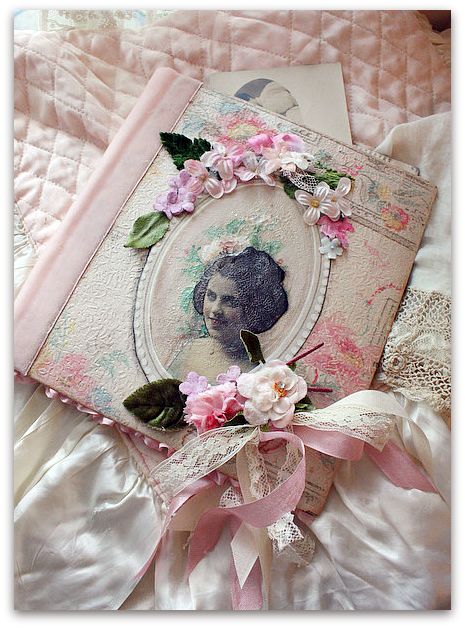
Here is an altered book I made this week. I thought I’d do a simple, quickie tutorial about the cover.
- The wallpaper covered cardstock is attached by gluing ribbon to the edge of the front cover and to the back also. Leave the center of the ribbon alone, not glued to anything, that leaves space for the cover to open and close.
- The pages can be stitched together and sewn to the center of the binding ribbon. Use a heavy duty ribbon, like the velvet one I chose.
- I cut girl from a hand tinted, old photo, and added it slightly off center to a medallion cut from wallpaper. At the bottom of the medallion, I used my Exacto blade to cut a slit to slide the photo under, so she looks like she is framed in the oval.
- I glued down the oval/medallion, and the photo of the girl.
- With a dark marker, I outlined the girl, and also the OUTSIDE rim of the oval, for shadows and depth.
- Leaving the outside ring of the oval “frame” alone, I spread crackle glaze (from Tim Holtz) over the entire center of the medallion and over the girl too.
- After drying, I topped it off with a bouquet of flowers and ribbons at the bottom and lined smaller flowers along the top of the frame.
************************************************************************************
Nesting (how to paint a bird’s nest)
Today, I’ve been busy at work in the studio painting drawer pulls. I had a boxful, some from Beth,some that I harvested from dressers when I fixed them up and changed out the handles to glass knobs. The first step in the redo was to prime them with a can of Zinzer spray primer. Then, I painted them white with acrylic craft paint.
Are you up for a how-to? I thought I show you the steps in painting a nest. First, start with a nest shape blob in dark brown.
Next, add two vaguely egg shaped blue blobs.
Add white highlights to the eggs.
Switch to a thin, liner brush and outline the eggs in the same dark brown used for the back ground of the nest.
Now, switch back to a small, round brush and load it with yellow and tan.
Add some of the yellow tan color, in lines that follow the shape of the nest.
Repeat with a layer of olive green.
This is all about the layers. Let each previous layer peek through the next. Don’t go at this with a heavy hand, let your layers of color build up, just as a bird would have built it with layers of sticks.
Now is time to switch back to the thin, liner brush. Using the dark brown, follow the shape of the nest again with your strokes. This time, be a little messy, with “twigs” sticking out all around.
Repeat the last step with white or ivory.
Fine tune the nest by outlining some strokes with the dark brown on a liner brush, here and there as needed
To finish, brush on a water based clear coat, or spray with a can of poly. I prefer the brushed on method myself. It might look like this was a lot of steps, but really, it goes fast and unsure, shaky lines make even better twigs than perfect lines! So give it a try, a nest is a simple thing to paint.
April 29, 2009
How to cut vintage wallpaper
For me, vintage wallpaper is simply a billion times better to use in art projects than any scrap booking paper could ever be. Now, I’ll scan a really, really wonderful piece before cutting it up, so I’ll always have it, but honestly, I don’t much like using the copied pieces. The feel just isn’t right.
Trouble is, vintage wallpaper can be a LOT of trouble. Its usually curly from being rolled up forever and it is often brittle.
Ironing it makes it much easier to work with.
I kind of go back and forth on what is the best way to iron and cut it. If it is really fragile, or I am just cutting a few pieces, I’ll cut it right off the roll, then iron the pieces. If I am on a marathon of ironing and have good movie to watch while doing it, I’ll iron it directly off the roll, like the first photo.
Here are some tips for cutting:
Keep a fresh blade in your exacto knife, or the edges of the paper will shred.
Find something the right shape and size to cut around. I use the glass from an 8 x 10 frame. That makes a good size bit to work with for most projects, and if I am making up packs to sell, its easy to mail.
Self healing cutting mats are wonderful! My blade doesn’t get dull too fast and I don’t slice up the table underneath. I used to try to measure the paper by the grid on the mat, but that was way too much work. Now, I just line up my 8 x 10 piece of glass with the straight edge of the paper and zip the blade around it. Much easier.
Iron the back side of the paper. Old paper is not prepasted, so the back is safe to iron on. If yours is gooey and gluey, its probably not very old. And your iron will be messed up.
The paper is often painted, if you want to protect your ironing board cover, you can lay a sheet of clean paper, or fabric over the board.
Ironing is almost as bad as sewing, but sometimes it has to be done. But ironing paper isn’t nearly as bad as ironing clothes, since there are no cuffs or collars. At least, that is what I tell myself to get through it.
The iron can be left on its highest setting and some cut papers can be ironed in a stack of two or three pieces at a time to speed things along.
**********************************************************************************************************************
October 16, 2009
How to redo a vintage doll
Helpful tips:
Keep a baby wipe or Wet One handy to de-glue your mucky finger tips reguarly
To use the light bulb for ironing, you need at least a 60 watt bulb
Pull the dress tightly over the bulb and run it back and forth, go all the way around the skirt
You can use the light bulb for ironing ribbons or flowers too
Sometimes, you just need to dip your fingers in water and dampen a ribbon that is already tied to the doll, to pull on it and straighten it out.
Keep your embellishments in scale with the doll. No giant buttons or jewelry, they all need to be small bits.
Try to use items the same age as the doll. You don’t want to add brand new embellishments to a vintage doll.
Don’t be afraid to glue everything directly to the doll, her clothes don’t need to come off to be washed or changed, so just glue everything permanently to her!
She doesn’t have to be perfect. You want her to still look her age.
If her rubber band that holds her head and arms on is loose, just glue the body parts in place. She really doesn’t use her arms, or turn her head and look around anyway. But do it after you fix her up, if the arms are glued solid, they might be in the way. Add them last.
PS- adding lots of flowers to her hair covers up any bald spots that couldn’t be corrected!
****************************************************************************************************************************
A Family Tree How-to
At my house, we craft before and after holiday dinners. I prepped the meal way ahead of time, making mashed potatoes in the crock pot, and had noodles slowly simmering on the stove all day, while the green bean casserole (from scratch, no canned soup) and turkey were ready to pop in the oven when the time came.
Guests brought side dishes made at home, so we had time to play instead of slaving away in the kitchen! The guys were watching the game and playing pool, so we went to the studio and started cutting and gluing.
We were making the Christmas stars in two sizes, large for tree toppers and smaller ones for ornaments. Or wouldn’t they be cute clipped to a ribbon and made into a garland?
We decided to use family photos on the ornaments, so we dressed the cousins up in their Christmas gowns and snapped a few quick pics of them to print out onto silver, holographic paper.
I wish the photos showed how pretty this shiny paper is.
A lot of you asked for how-tos for this Christmas star, so I thought this would be a good day for it. If you have a houseful of family together for the holiday weekend, this is a fun project you can all do together. Take photos of each other for the centers of the stars and you can make a “family tree” for Christmas.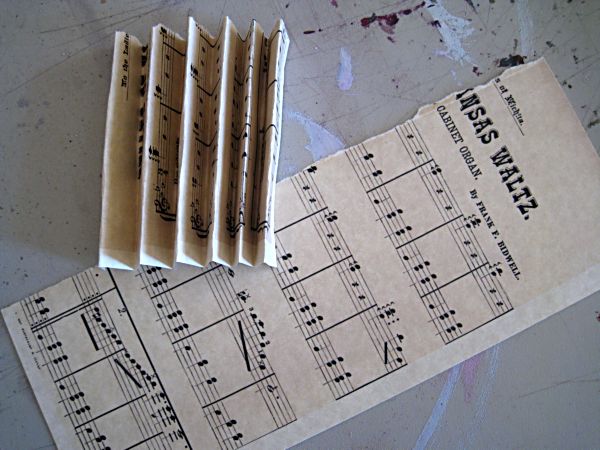
Card stock works best. I wanted a vintage image, so copied this sheet music onto parchment colored card stock. You can use scrapbook paper, or heck, even plain card stock, what ever colors you like for a background.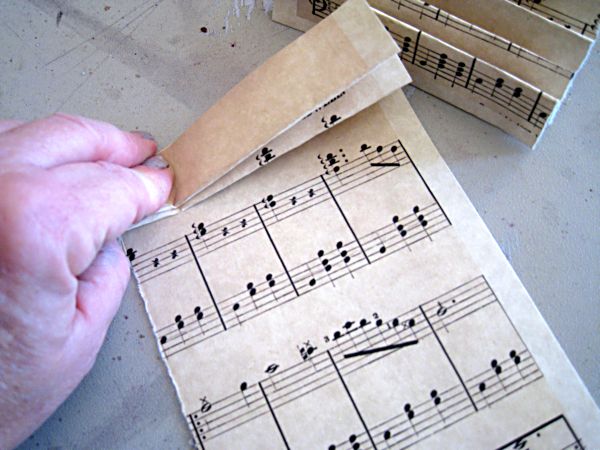
Cut a piece of paper in half lengthwise and then fold both pieces in accordion pleats.
Then do a second piece to match.
Staple all four pleated sections together.
I suppose that for a tidier look, you could use glue, if you had an issue with not wanting staples to show. But if you do, you’ll be wishing you were an octopus. I quickly switched to staples, after starting out using glue.
This is what it should look like.
You will need to cut 2 pieces of card stock to fit the back and the front of the star to hold it in place. Any shape, any paper that pleases you for your design.
For this tree topper, I used plain white on the back.
For the front, I used flocked wallpaper glued onto the card stock, then cut into an oval. After gluing, weight the paper down for minute or two till it sticks good.
That is a good time to take a break for a quick cuddle with someone furry and cute.
After the glue dries, you can trim the edges to get a star shape. Then with a paint brush (or fingers, like I use) add glue to the clipped edges and sprinkle with glitter.
At this point, it is ready to decorate however you’d like. Streaming ribbons, photos, flowers, sparkly things, whatever suits you.
If you think you’d rather make the smaller size, instead of the tree toppers, use one piece cut into 4 equal strips lengthwise instead of 2 pages cut in two strips.
And if you’d like extra sparkly edges, use Stickles as the glue that you add glitter to. (by the way, Stickles is now available at Hobby Lobby!!!)
HOW TO BLING A BIRD HOUSE
I’ve bought houses in an assortment of sizes and shapes. Some from the craft departments of Wal-Mart, Hobby Lobby and Michaels in unfinished wood or paper mache, some already painted and with cool shapes in the garden department at Hobby Lobby.
All are smaller, some mini, none made for outdoors, they are for decorative purposes only.
The prices have ranged from 67 cents to about $5 at the most.
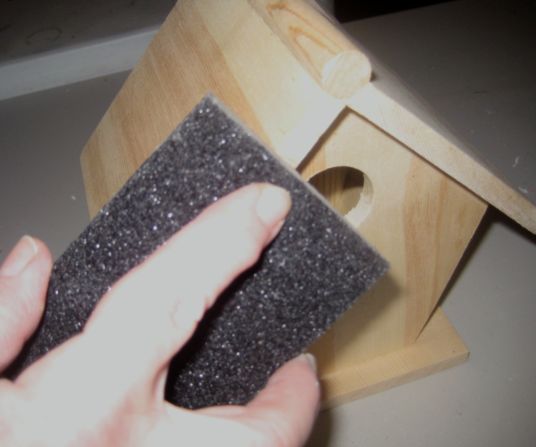 A minor buffing up with a sanding block will take off any rough edges.
A minor buffing up with a sanding block will take off any rough edges.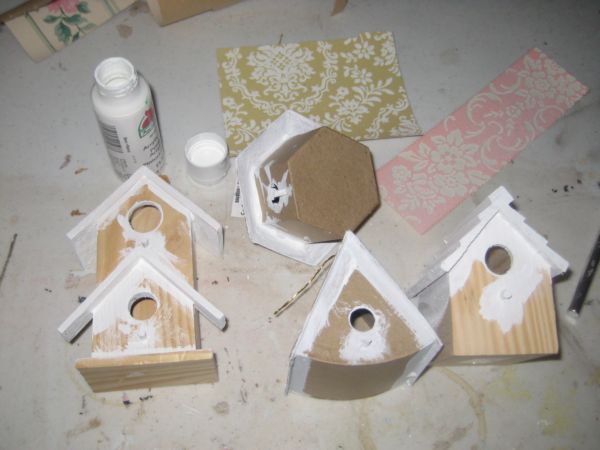
And I discovered that the homes were much easier to decoupage onto if you don’t have to worry about crevices and corners and edges.
So, I base coated all the cracks, and up under the eaves, the perching post, and the inside of the hole as well as any other spots that looked like it would be hard to cover in papers.
No reason to paint the entire piece, since most of it will be covered up.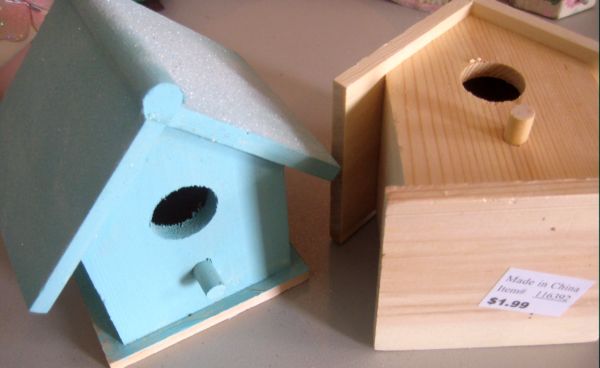
Although, for this one, I purposely painted all of it, just so there would be some contrast for the photos I was taking of the steps.
And notice that I didn’t sand the edges first? I wanted you to see the rough wood, it shows up better on the blue house, look inside the hole at the jagged edges. A quick little twist of the sanding block inside that will knock those bits down pretty smooth.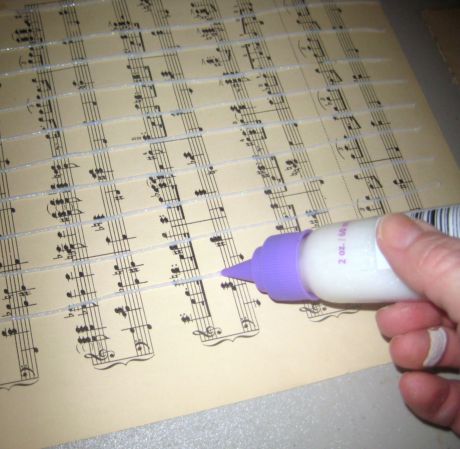
Here is a short cut I came up with for making the houses go more quickly. I have been making a LOT of houses, so speedy tips help me a lot.
I used glitter paint to draw lines across old sheet music. You could also use plain glue or glitter glue.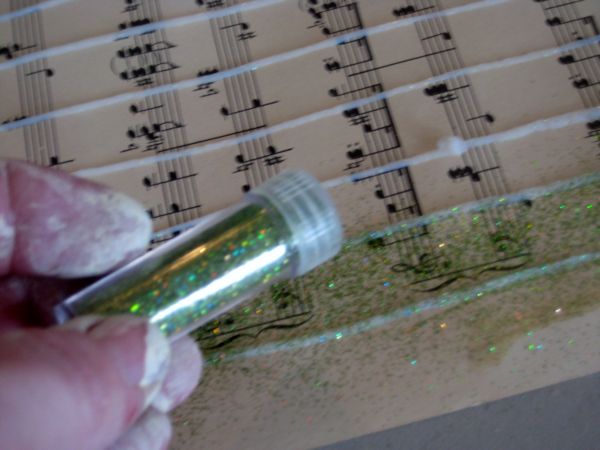
I sprinkled glitter over the lines.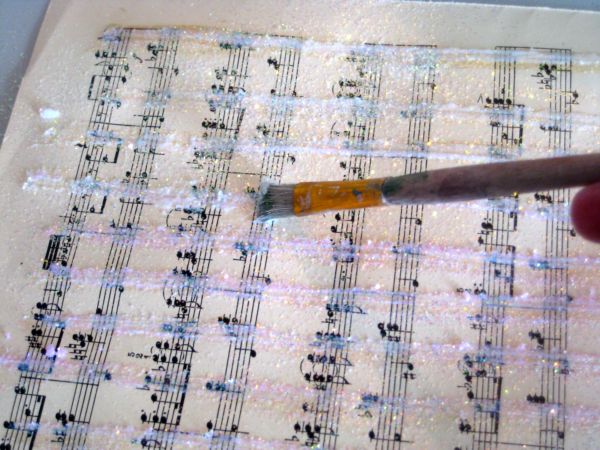
Next, I used a paint brush to spread the rows of glitter out a bit flatter.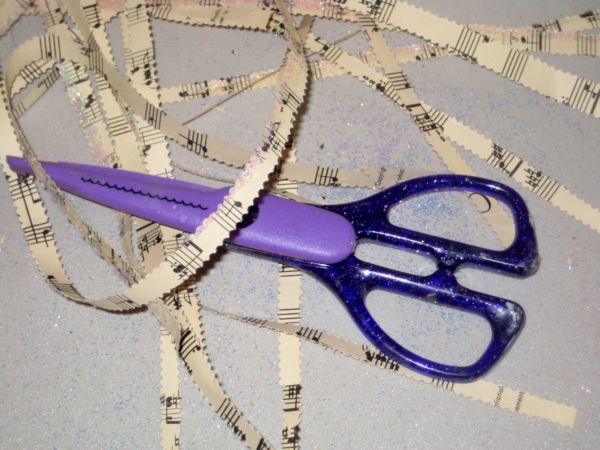
With decorative scissors, I cut narrow strips of sheet music, just perfectly sized for gluing onto the edges of the roof or around the base of a bird house.
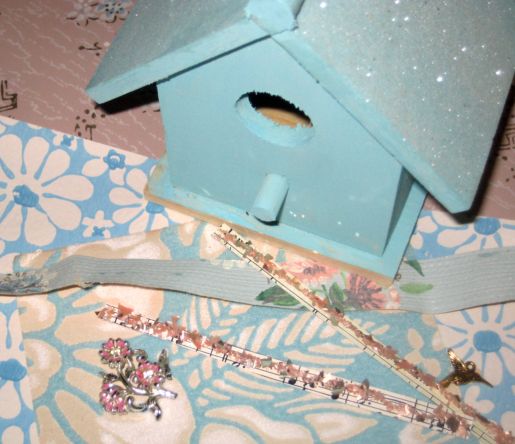 For this house, I decided to glitter the painted roof. I used the same glitter paint that I used on the sheet music.
For this house, I decided to glitter the painted roof. I used the same glitter paint that I used on the sheet music.
It was brushed on after the paint was dry, and then I sprinkled more glitter over it while it was still wet.
After all my prep work was done, I gathered up my supplies. I looked around to find colors and tidbits I wanted to work with.
Go ahead and pull out extras, you are never sure how much you will end up using, but having a pile to chose from, already selected, and in the chosen palette not only saves time, but is an inspiration for the project.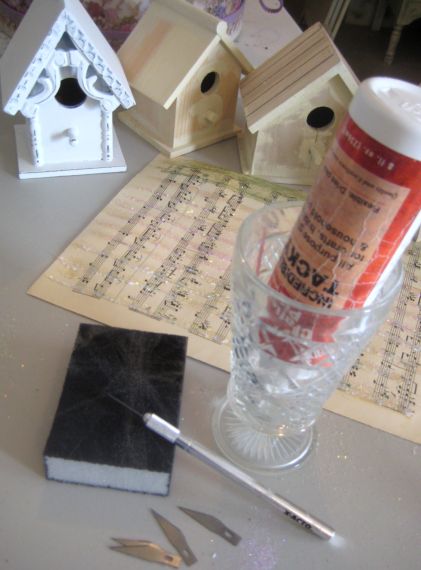
You will need:
a sanding block (or sand paper)
an exacto knife (and be generous with yourself- replace the blades as needed!! It really does make a difference to have a fresh blade)
glue (I always store mine upside down so it flows better)
a Popsicle stick or something similar to burnish paper down with
scissors
goodies to add to the house
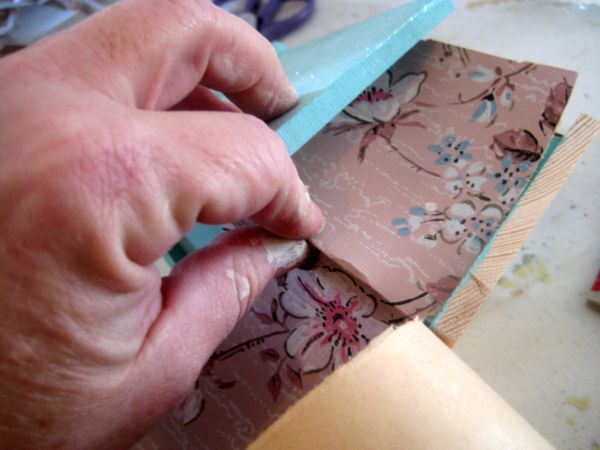 Here is a point where you might want to make a pattern. I just go ahead and use my wallpaper. I fit it to one side of the wood at a time, bending and creasing to show myself where to snip it with the scissors.
Here is a point where you might want to make a pattern. I just go ahead and use my wallpaper. I fit it to one side of the wood at a time, bending and creasing to show myself where to snip it with the scissors.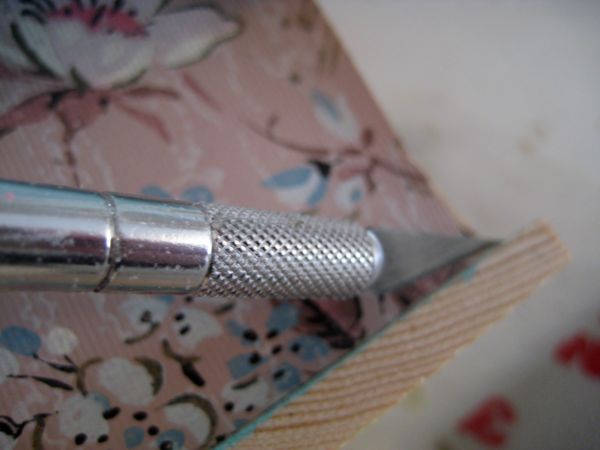
You can also trim it with your exacto knife.
If you are making more than one birdhouse of the same design, or have a limited amount of old paper and don’t want to waste any, it might be a good idea to make a pattern this way and then using the pattern to cut out your chosen papers.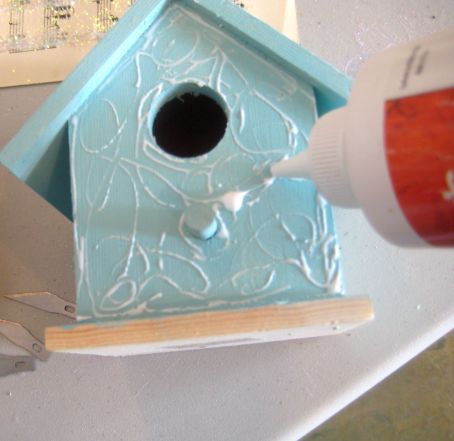
I poke the perching post through the paper, then trim around it with the exacto knife.
After the paper is cut, I liberally add glue to the house.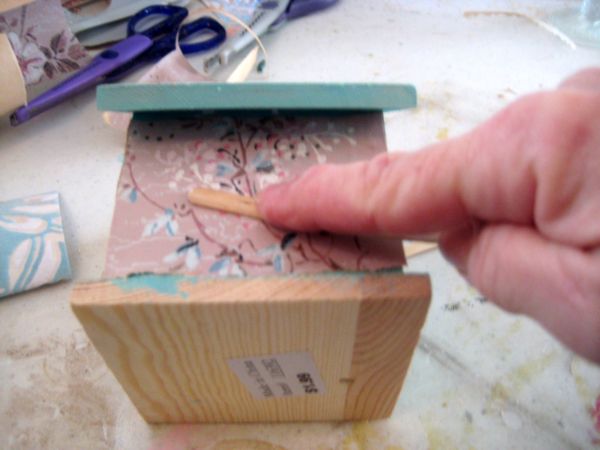 Attach the paper, and using my exacto knife, poke a hole into the area where I think the house’s hole should be.
Attach the paper, and using my exacto knife, poke a hole into the area where I think the house’s hole should be.
I then saw with the exacto knife to the edge, and around the hole to cut it out.
Wooden Popsicle sticks or coffee stirrers are great for rubbing the paper down.
Once the glue is dry, I lightly sand the edges with the sanding block again, being careful to not tear the paper. 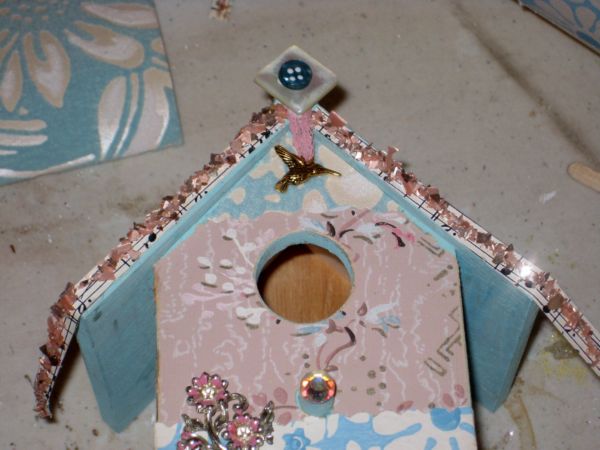
Now we get to the fun part. Decorate it! Baubles and buttons and doodads and glitter and stripes of coordinating papers. Old jewelry, ribbons, lace, what ever makes your bird joyous.
I have a few more houses to foof myself. One is actually a little Swiss music/jewelry box that I got for a quarter at a garage sale. But of course, this decopauge technique will work on all sort of different things, not just bird houses.
Another suggestion I have to offer is, that whether you use scrap booking paper, vintage papers, or whatever you decide, the papers do seem to look better with a smaller print, or an over all pattern. The smaller the house you cover, the smaller the print you should try to use.
For the welcome night class I am teaching at Once Upon a Dream, I needed a pretty ruffle to top off my Prize Ribbon Sprite brooch. Plain crepe paper was nice, but I thought it would be better with tinted edges.
My first step was to dunk the top and bottom of a whole roll of crepe paper into a bowl of water. I didn’t immerse the entire roll, just about 1/4 on each side.
While it was wet, I spritzed the damp edges with Glimmer Mist and let it bleed down into the paper.
On one side of the roll, I rubbed dark brown ink over the Glimmer Mist for a two toned effect. (Glimmer Mist has a nice sparkle to it!)
Then, I sat the roll of crepe paper outside on a sunny, breezy day to let it dry. It had to be completely dried out before I could make up my kits.
I’m happy with the way it turned out. I folded a section of the streamer lengthwise and glued it onto the back of the wallpaper medallion to make the ruffle.
*******************************************************************************************************************************************
Painting furniture with no sanding, some short cut tips
I’ve done a few other furniture painting tutorials (you can find them on my side bar, along with a lot of other how-tos), but those were mostly whites, creams, grays. Not everyone lives with “low color” like I do, a lot of people like some flash. I know my family does, they all think my neutrals are boring. So when I paint something for them, its usually bright and cheerful.
So, I thought I’d give you some tips for using deeper colors.
Our Hippy Chick was given this two piece set by her dad, it used to be his mom’s. It looks okay as is, but dull for a fairy’s bedroom, and this was meant to go in Sugarwing’s room at her mommy’s house.
Its been painted a number of times, looks to me, like the latest was a 1960s antiquing technique.
When I don’t know who painted a piece or what they used on it, I always coat it with a BONDING primer, so my own paint will have good adhesion. If I painted it myself and know that it was latex with no poly top coat, I skip the primer and just paint it as is. But since so many things I paint are garage sale or flea market pieces, I have no idea who used what on it and I use primer in case.
Over the years, I’ve tried many of the brands of primers. Currently this is my favorite water clean up one.
There are gobs of primers out there, be sure that you are using a Bonding primer, that says it will stick to glossy surfaces, do NOT use dry wall primer, that is a completely different thing. Kilz will not work unless you also sand.
I NEVER ever sand or strip the piece before I paint it. Life is too short!
Now, if you are painting something really tough, like laminate or a high gloss laquer, maybe a quick sanding wouldn’t hurt, just to give it some tooth. But for most furniture, a bonding primer will be just fine with no sanding at all, as long as the piece is clean.
For darker or deeper colors, use a gray undercoat to prime with. The white one is too glaring and will take more coats to cover it.
Speaking of coats, use good paint. Wall-mart paint is cheaper, but you use more because you are going to use more coats. More time, more work, more paint.
A quality paint saves you quite a bit. This Behr is my fave, it comes in many colors and usually only takes one coat.
For this, I let Sugarwings pick out the color herself. Its a Disney shade that is carried by Home Depot.
I chose Satin finish, that should hold up to little fingers and heavy use with no top coat. This is a good paint that will last.
After cleaning the furniture, decide if you want to change the hardware, if so, you might need to fill in the holes with putty, let dry, sand and then repeat. After the piece is painted, you drill new holes to match the new hardware.
If keeping the knobs, do you want contrast or do you want to paint over them? If this was going to be a cream colored piece, I’d have liked the contrast of the aged brass. But for a kid’s room, I wanted the pulls to blend in. So I left them in place and just primed and painted right over them. (when I was all done, I dry brushed another shade over them so they would have a little more interest)
Pull out any drawers, and set them up on their backs to paint. It will save dripping.
Don’t ever paint the sides, or the bottom of the drawers, or they will stick like crazy! I like to wax the sides of each drawer, for an easy opening and closing.
Also, I paint the interior of each drawer, just to make them feel clean and fresh.
If you are doing decorative work after the paint dries, acrylic craft paint works fine. I made simple stripes in multiple sizes with different sized brushes, and polka dots with a round sponge. Then painted some flowers on the bottom drawer, added vines to the doors, and accented the trim with various shades.
I am not a perfectionist. I like old furniture to look like old furniture. If its been painted a few times in its life, I like that to show. I don’t sand it down before painting, or between coats. If you like the perfectly smooth look, you’ll need to sand.
When painting around glass doors, make sure you scrape the glass off with a razor blade within a couple days of doing the job, or the primer will be hard to get off.
If you are painting a two piece set like this, let the paint “cure” for a few days before stacking them.
Any questions? Feel free to contact me.
Tools you’ll need:
- bonding primer
- quality paint
- opener
- drop cloth – unless like me, you don’t worry about your workspace floor! You can see mine has seen some painting over the years
- a wet rag is nice to keep handy
- paint brush
- small sponge roller (for big, flat areas, this sure speeds things up)
****************************************************************************************************************************************
This is a cement floor that I painted at an antique mall about 8 years ago.
The mall owner let me pull up the carpet in my space and paint over the concrete below. I’ve done this in homes too, back when I was a full time painter. I’ve also tried this look on wooden floors and used the same steps. One area that did NOT work was an outdoor patio. And that was because of the temperature fluxuation here in Kansas. The winter freezing and summer heat, caused contracting and expanding that ruined the paint job.
Here is how I do it:
- Cut the carpet in strips with a box cutter. Change the blade often, a dull blade makes the job much harder. Pull up the carpet.
- After the carpet was gone, I cleaned the space well, getting up any fuzzies left behind from the rug. I didn’t bother to sand down the glue marks, I just painted right over them. I kind of like the texture it gives the floor.
- Before painting, always use a good bonding primer. Bonding is the key! Not just Kilz. You have to always read the labels, there are a lot of primers out there and they are made for different uses. A bonding primer lets you paint right over any surface without sanding and allows your paint to adhere and grip where you want it to. Look for the words “bonding” or “will stick to glossy surfaces”. I prefer water based primers such as Glidden Gripper.
- I painted the cleaned floor with a base coat of latex house paint, over the primer, and then did the art work with acrylic craft paints. I used a dark brown for the base, and a sponge roller to create the stone texture in lighter colors over it. Then splatter painted over the rocks before adding the details.
- Top it with polyurethane. For the top coat, make sure you have plenty of ventillation, and stay off of the floor for a couple days.
As you can see, this floor has held up great, and it has been there for years, surviving shoppers and lots of furniture being moved around over it.
***************************************************************************************************************************
Starched lace leaves
What gorgeous weather we are having! I took advantage of the sunshine to get outside and do some yard clean up. Last fall, I kind of slacked on the leaf clean up and realized what a big mistake that was this spring. Leaves left over the winter get soggy, heavy, half decomposed, and best of all, used as a cat litter box.
So, the leaf blower wouldn’t do the trick, it took rakes and snow shovels to clean up what I could have just blown away into the woods if I’d done it last fall.
But, its done now and while the yard still has its grey winter gloom look, it isn’t buried in leaves. Everything looks much tidier. I picked up sticks and branches, and raked over mole mounds to flatten them out.
Gee, that’s interesting, huh? Well to get to the point of the story, I found a branch on the ground that I thought was a pretty shape, and I spray painted it white to bring into the house.
It was a good day to be outside spray painting, so I grabbed a few vintage cardinals and white washed them too. I thought maybe I’d foof them up and add crystal eyes, millinery flowers, and other pretties, but decided that I liked them just as they were, simple and white.
I brought in a peeling paint flower pot full of sedum and stuck the branch down into the dirt. The sedum was nice, but I wanted a bit more at the base, so I sat a house plant into a terra cotta pot, tied a pretty page from an old book to it, and added that next to my tree.
To make sure the tree stayed upright, its stuck in the dirt nice and solid, and I braced one side with a rock and the other with the pot of flowers.
The fun part was making leaves for my tree. I’d seen some similar ones at Anthropologie last year and wanted to try making some myself. I don’t know how they did theirs but this worked for me.
I cut some random leaf shapes from lace and soaked them in full strength starch, then left them on a cookie sheet to dry over night.
When they dried, I wired them onto the branches.
I’d also wrapped Xmas lights around the tree, and did a slightly crappy job of it, they are just loosely draped. It would have looked better if I’d spent more time on it, and attached them more attractively. But the branches are pretty fragile and I didn’t want to snap them all off by messing around with them too much.
One bird sits in a little nest that I found in my stash, the rest of the birds just clipped on.
Besides waiting for the leaves to dry over night, it was a very quick project. And easy to do. I didn’t use a pattern for the leaves, and they are different sizes, just like a leaf would naturally be. I discovered that it was easier to trim them up into a better leaf shape after the starch had dried, than before I dipped them and the lace was floppy and wrinkled.
If you want to try this, it’s probably a better idea to starch the lace, let it dry, then cut the leaves out.
You could also purchase white birds at a craft store if you don’t have any old ones to paint.
Another variation you could do, is to just put branches into a large vase or urn, not a flower pot full of dirt.
*****************************************************************************************************************************
How to make a Hocus Pocus/ Practical Magic/ Grimmerie/ Evil Dead/ Evil Eye/ whatever you want to call it, magic spell book
My sisses came to see me last week and we were able to squeeze in a craft day between all of our runnings around. One trip out was to the Victorian Trading Co. outlet store in KC, and Bobbie saw something there that she had wanted to order, but was glad she did because it wasn’t as cool in person.
It was an evil eye, magic spell book. Kind of like the Hocus Pocus book. I decided we could make our own and use better materials instead of the resin that fake book was made of. Plus, our books are functional, Bobbie is using hers as a photo album for our trip.
One of mine is actually a faux book that opens up as a trinket box. I’ve got three books listed on Etsy if you are interested in buying one.
Or if you’d rather make your own, here are some quick how-to’s.
This eye, is made of paper clay and hand painted, but if you aren’t a painter, I have a short cut for you.
You can use a doll eye from the craft store.
On this one, I cut the back off so it had a lower profile.
The eyelids are made of paperclay.
Simply surround it with a couple of snake rolls.
Then smoosh them out and add wrinkles with a toothpick or clay tool.
I used some modelling paste over the old paper I added to the cover, and a piece of lace to texture it all. You could also use a thin layer of paper clay, but it is more expensive and heavier, I found the modelling compound easier to use for an all over dragon skin look.
I won’t go into details about finishing my books, the decor is a personal choice and you can embellish your book however you like now that you know how to make the evil eye.
What was important to me while making them, was that I kept the covers pretty even while they were spooky.
Lots of rhinestones, ribbons, and Victorian lace.
The Good Stuff.
I also thought a key hole and key were a good touch.
And don’t neglect the insides! These pages are inked and edged to look old. The inside covers are sheathed in vintage wallpaper.
I even found some “nice” spells in an old fairy tale.
“Weave your Joy
Sing your Spells
Wave your Charms”
It seemed to me, with an eye that creepy on the front, the books all needed an extra wallop of pretty to counter balance that.
Plus, who wants an evil witch book around?
I much prefer good witches. This cover reads:
“As good and kind as you are fair”
